50 Genetically Unique Animals That Look Straight Out of a Fantasy World
20 May 2024It's commonly assumed that zebras must have stripes, while cats and dogs typically possess four legs and a single nose. Anything deviating from this norm is often labeled a mutation, suggesting something abnormal or unattractive. Nevertheless, animals with mutations can be incredibly cute and charming. Some of the creatures featured in this article are so surprising that it's hard to believe they exist at all.
Black Rooster
The Ayam Cemani, an Indonesian breed of chicken, stands out as an embodiment of nature's darker hues. Its distinctive feature? Hyperpigmentation, results in a striking obsidian plumage that covers not only its feathers but also extends to its beak and even internal organs.
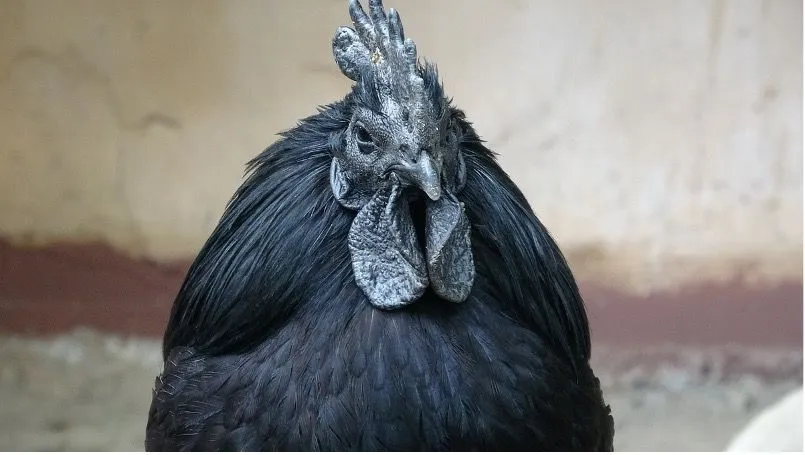 @furbymama/pixabay.com
@furbymama/pixabay.com
This remarkable pigmentation arises from a dominant gene that governs melanin production, the pigment responsible for skin, hair, and feather coloration in animals. In the case of the Ayam Cemani, this gene operates in overdrive, saturating its entire physicality with an intense blackness rarely seen in the avian world.
The Cat-Fox
The cat-fox, with its enigmatic charm and elusive nature, captivates both scientists and nature enthusiasts alike. This rare feline, known scientifically as Felis catus corsicanus or "Ghjattu volpe" in Corsican, possesses a genetic makeup that sets it apart from its domestic counterparts.
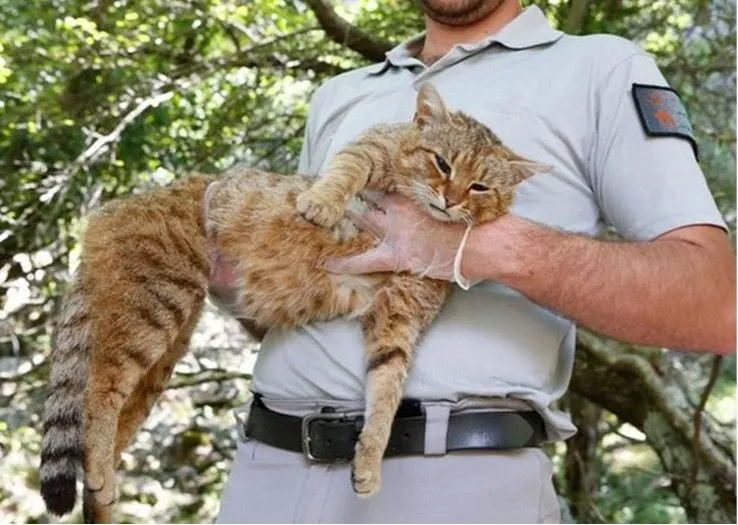 @Carmal Hill/quora.com
@Carmal Hill/quora.com
This animal stands out for its impressive size, reaching 35 inches from head to tail. Its tail is a key feature, with black tips and distinctive rings. The front legs are adorned with stripes, while the hind legs are a noticeably dark color. This creature is further equipped with a dense, silky coat that naturally repels fleas, ticks, and lice.
Vitiligo Has Given this Cat's Fur a Remarkable Appearance
Vitiligo, a condition characterized by the loss of skin pigmentation, has bestowed upon this cat a truly remarkable appearance. As a result of this unique genetic trait, patches of the cat's fur have turned a striking shade of white against its original coloration.
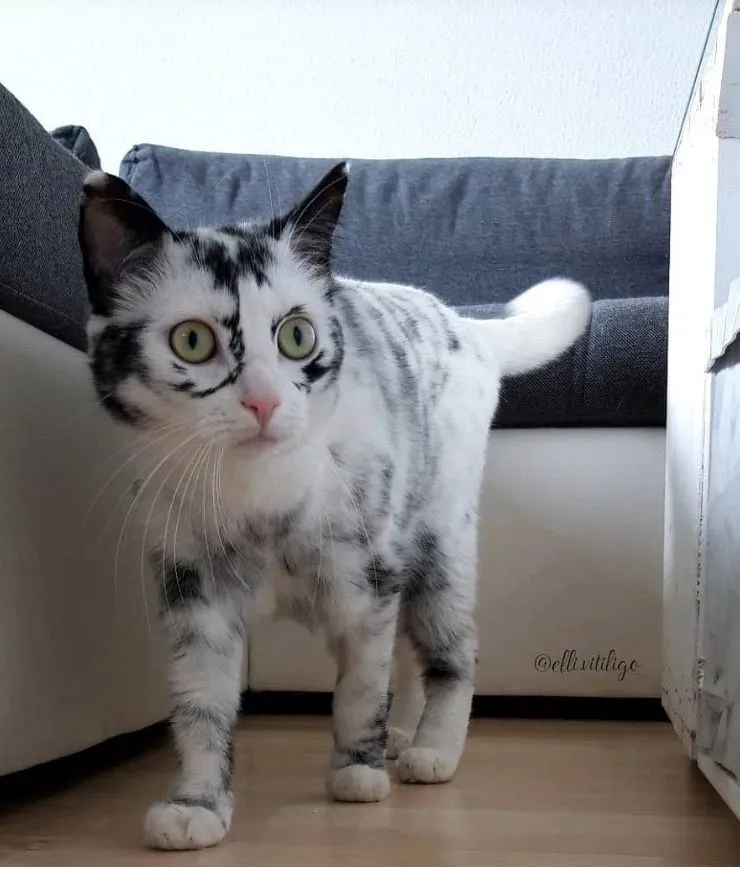 @elli.vitiligo/instagram.com
@elli.vitiligo/instagram.com
It creates a captivating contrast that is both beautiful and distinctive. This feline's fur serves as a testament to the wonders of nature's diversity, showcasing the unexpected and extraordinary ways genetic variations can manifest in the animal kingdom.
Is the Cat with Down Syndrome?
From a scientific perspective, the genetic makeup of cats differs significantly from that of humans, rendering them incapable of developing Down syndrome. Cats possess 19 pairs of chromosomes, while humans have 23 pairs. This distinction in chromosomal count means that the genetic basis for Down syndrome, which involves an extra copy of chromosome 21 in humans, simply does not occur in felines.
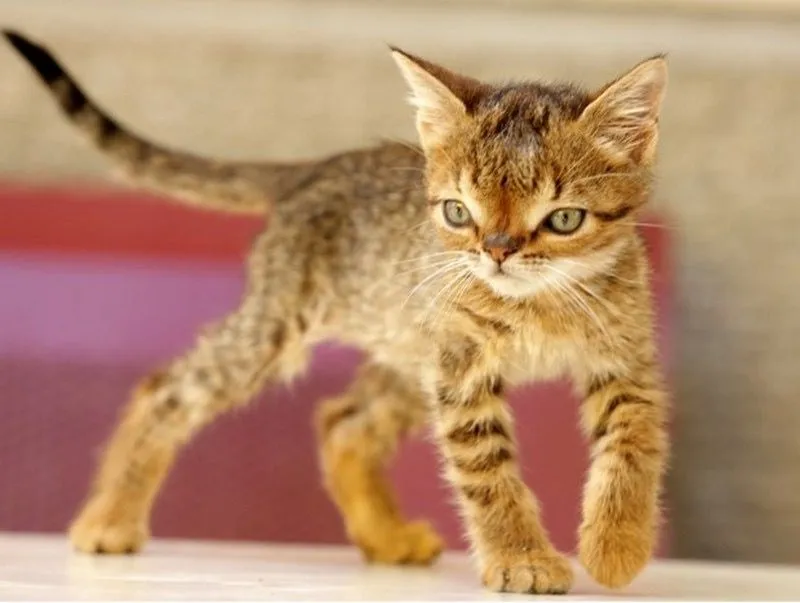 @ignatiuspopular/imgur.com
@ignatiuspopular/imgur.com
The cats can experience genetic abnormalities that result in conditions similar to those observed in humans with trisomy. Trisomy arises when there are three instances of a specific chromosome instead of the usual two. In cats, these genetic mutations can lead to a range of symptoms that bear resemblance to those associated with Down syndrome in humans.
This Dog Exhibits a "Forked Nose" Feature
This particular dog boasts a distinctive feature known as a "fork nose," a trait that can be attributed to animal genetics. Unlike the typical straight or slightly upturned noses found in many dogs, a forked nose presents a unique split or division at the tip, resembling the tines of a fork.
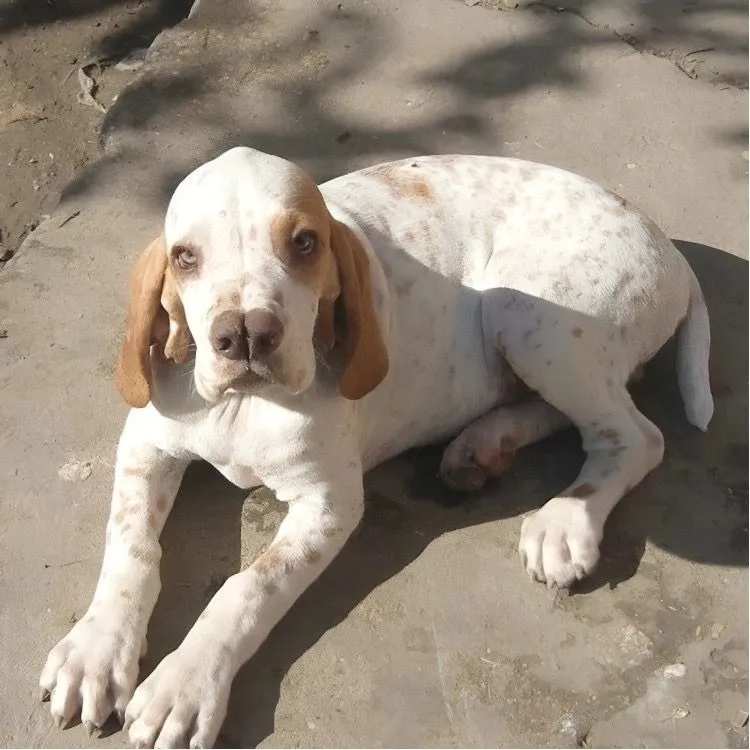 @Rabano11/reddit.com
@Rabano11/reddit.com
From a genetic standpoint, the development of a forked nose in dogs is believed to result from a combination of inherited traits and variations in the growth of the nasal cartilage. It is thought to be influenced by factors such as genetic mutations or variations in gene expression during embryonic development.
This kitten Has an Extra Paw
The presence of an additional paw on this kitten is a rare occurrence. Unlike the typical four-pawed structure of most cats, this kitten's extra appendage adds a curious twist to its appearance. This polydactyl condition, as it's called, can affect both front and hind legs. While it might require some special care, it doesn't hinder the kitten's ability to live a happy and healthy life.
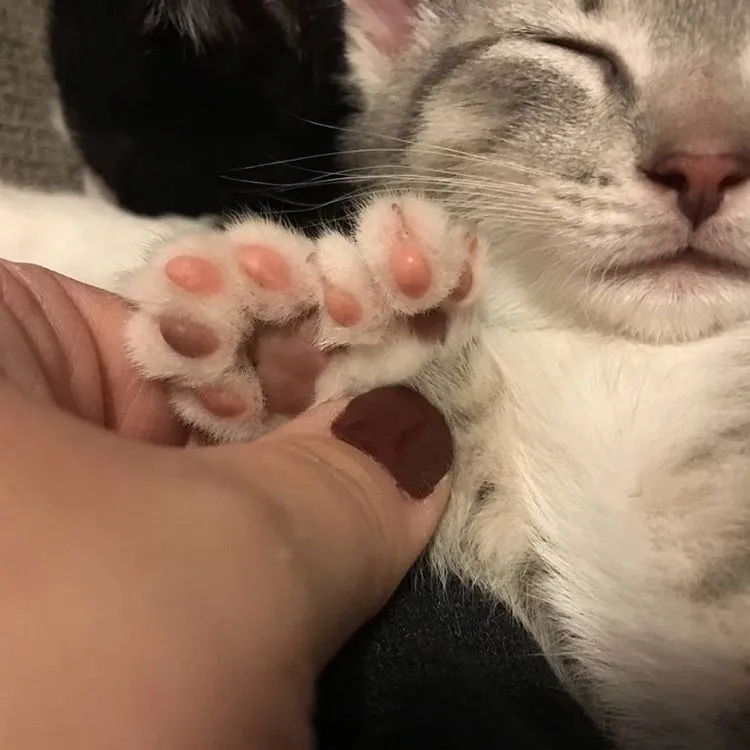 @Nikkibert/reddit.com
@Nikkibert/reddit.com
From a scientific standpoint, the development of an extra paw in cats is believed to result from a genetic mutation during embryonic development. This mutation can lead to the formation of an additional limb bud, resulting in the manifestation of the extra paw.
The Phenomenon of Shrek’s Ears
This black cat possesses the same distinctive ear anomalies as Shrek, capturing attention with its unique genetic trait. Much like the famous cartoon character, this cat's ears exhibit an unconventional folding, setting it apart from its peers in the feline world.
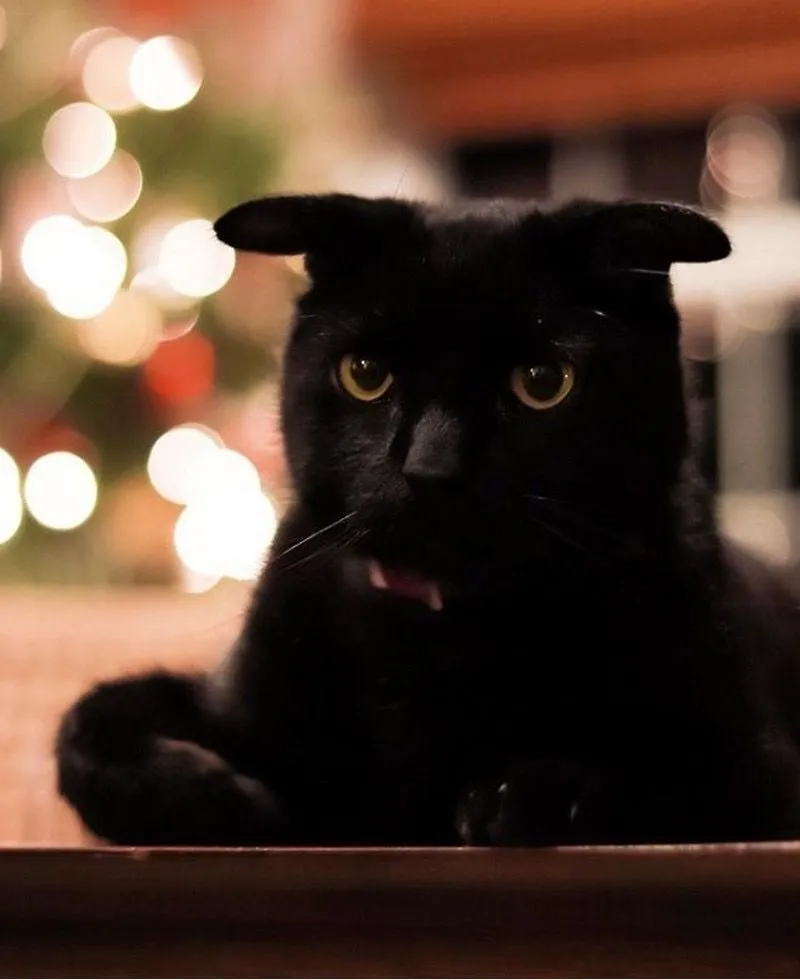 @flatheadthecat/instagram.com
@flatheadthecat/instagram.com
The phenomenon of Shrek's ears continues to intrigue both enthusiasts and scientists alike. While the precise genetic mechanisms underlying this trait remain elusive, it is believed to stem from a combination of inherited factors and variations in genetic expression during development.
40 Tail Feathers of Pigeon, It’s Not a Joke
While most birds sport a modest number of tail feathers, pigeons of certain breeds flaunt a surprisingly high count. This extravagant feature is especially noticeable in breeds like the English Carrier, Fantail, and Lahore, where some pigeons can boast a luxurious tail with up to 40 feathers!
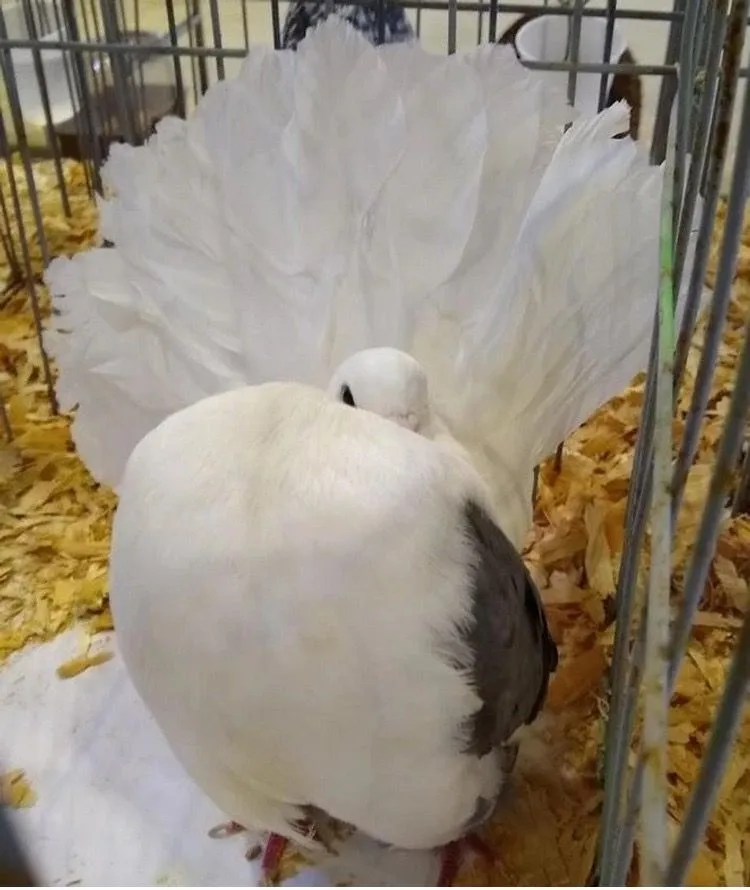 @MelonHead247/reddit.com
@MelonHead247/reddit.com
With a breathtaking number of tail feathers, these pigeons boast a regal presence, standing out dramatically from their relatives. This unique feature isn't a quirk of nature, but rather the result of meticulous selective breeding practices honed over centuries. Breeders specifically favored pigeons with increased tail feather counts.
The Natural Eyebrows on this Dog Would Make Even Cara Delevingne Envious
Unlike many dogs clad in snowy white fur, this little one possesses a striking genetic quirk: unique black eyebrows that stand out in beautiful contrast. These dramatic markings, almost like a pair of expressive brushstrokes, add a touch of whimsy and expressiveness to its face. It's as if nature decided to give this pup a permanent look of surprise or amusement!
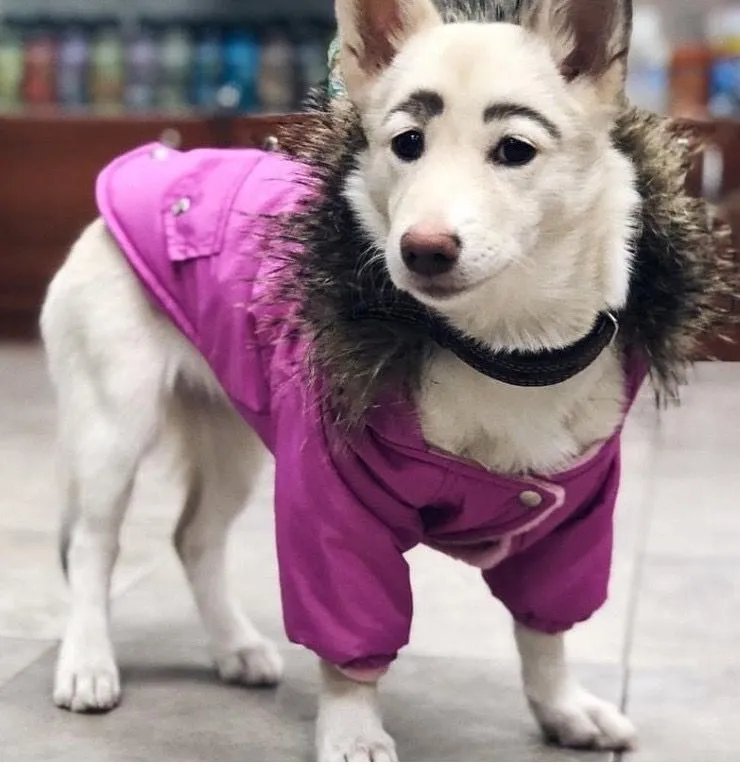 @brovisvoi/instagram.com
@brovisvoi/instagram.com
The presence of black eyebrows on a white dog is a fascinating genetic anomaly, highlighting the intricate complexities of canine genetics. This unexpected splash of color is caused by a variation in melanin distribution, the pigment that determines fur and skin color. It's a beautiful reminder that even within established breeds, nature can throw in a playful twist.
The Paws of This Kitten Resemble Human Hands
The adorable kitten in question boasts paws that bear a striking resemblance to human hands. With their dainty shape and delicate features, these kitten paws evoke a sense of wonder and fascination, drawing attention from all who encounter them.
 @FirstCatofNZ/twitter.com
@FirstCatofNZ/twitter.com
While cats are known for their retractable claws and digitigrade stance, the appearance of human-like paws in this kitten showcases the remarkable diversity that exists within the feline species. Perhaps a genetic mutation, these "little hands" spark curiosity about how they might impact the kitten's abilities and interactions with the world.
This Cat with Vitiligo Appears as if it Simply Dipped its Face into White Paint
The cat with vitiligo exhibits a remarkable appearance as if it had casually dipped its face into a pot of white paint. This distinctive trait arises from the interplay of unique genetics, resulting in patches of depigmented fur against its original coloration.
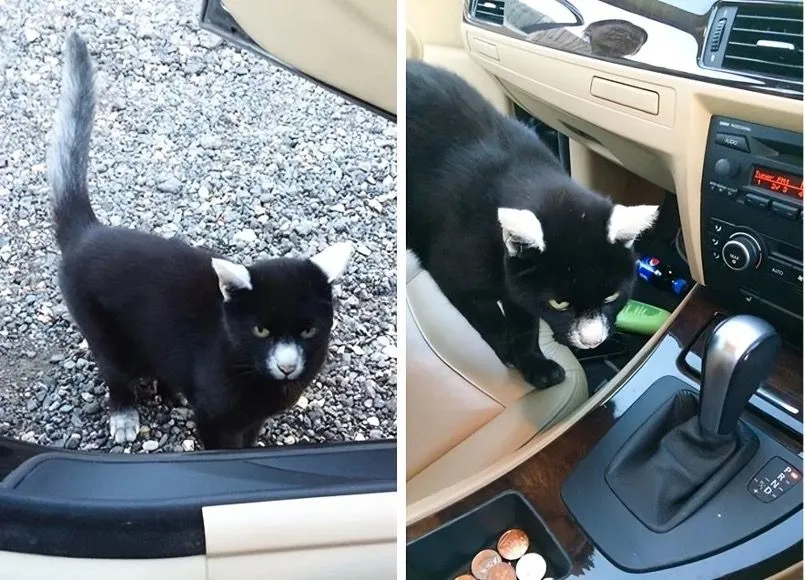 @EdenBlade47/reddit.com
@EdenBlade47/reddit.com
While a medical anomaly, vitiligo in no way affects the cat's health and only adds to its one-of-a-kind charm. In fact, the unexpected pattern can give the cat an air of mystery. This unique characteristic makes each vitiligo cat a walking conversation starter.
Husky and His Huge Tail, Like a Fox
The Husky with its enormous tail, reminiscent of a fox's, presents a captivating spectacle that piques curiosity about its genetic makeup. Such an extraordinary size hints at a fascinating genetic anomaly, a potential mutation, or a throwback to a time when even fluffier tails were advantageous.
 @Mortifier/reddit.com
@Mortifier/reddit.com
Perhaps this extra-large appendage provided better balance in harsher environments, or maybe it simply offered superior warmth on frigid nights. Scientists are still unraveling the mystery behind these supersized tails. But from a visual perspective, the Husky's fox-like tail adds an element of mystique and charm to its appearance.
Hairless Hamster in a Sweater
When a hairless hamster was born into their care, its owners were faced with a unique situation. Unlike typical hamsters with a fur coat to keep them warm, this little one lacked that essential layer of insulation. In response to this unusual circumstance, the caring owners decided to take matters into their own hands and fashion a tiny sweater for their furry friend.
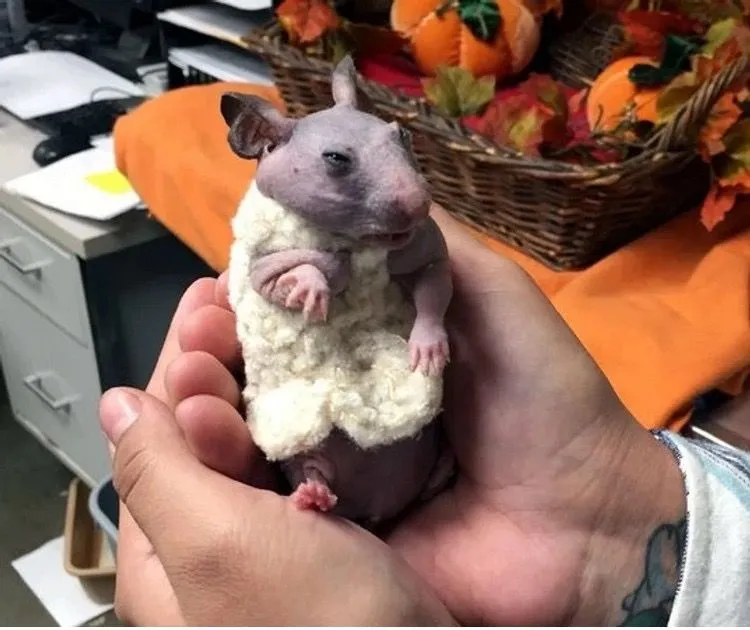 @OregonHumane/twitter.com
@OregonHumane/twitter.com
This act of compassion and ingenuity showcases the bond between humans and pets, as well as the remarkable adaptability of both. Recognizing the need to provide warmth and protection for their hairless hamster, the owners improvised a solution that would ensure their pet's comfort and well-being.
This Dog with Vitiligo is Pretty Cool
This dog appears to have white glasses on its face, even though its fur is black. This unusual dog attracts a lot of interest among people because it stands out from the crowd. However, in reality, this is not just an unusual coloration - it is a condition known as vitiligo, which can occur in both humans and animals.
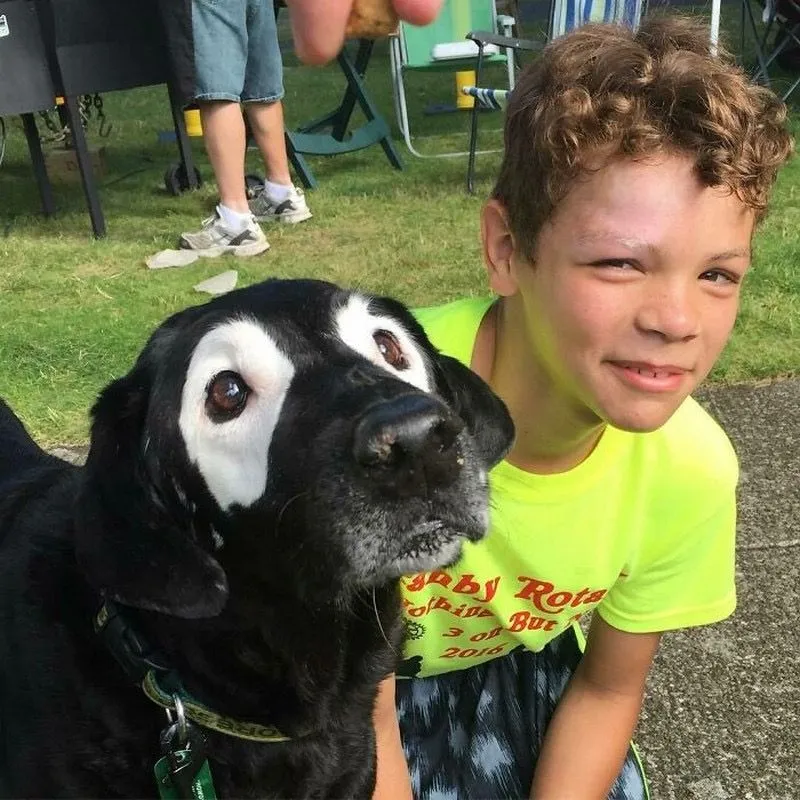 @white_eyed_rowdy/instagram.com
@white_eyed_rowdy/instagram.com
Imagine strolling down the park with this pup – heads would turn, smiles would break out, and questions would undoubtedly arise. "What kind of dog is that?" or “Are those...glasses?” This dog's unique appearance becomes a bridge, sparking conversations and fostering connections between strangers.
The Cat’s Beautiful Eyes
The mesmerizing gaze of this cat, with different colors of eyes, captivates all who behold it. This feline's distinctive feature of heterochromia, or having eyes of different colors, is a result of a fascinating genetic anomaly. This disruption can lead to a mesmerizing mismatch, with one eye sparkling green or golden while the other shimmers a captivating blue.
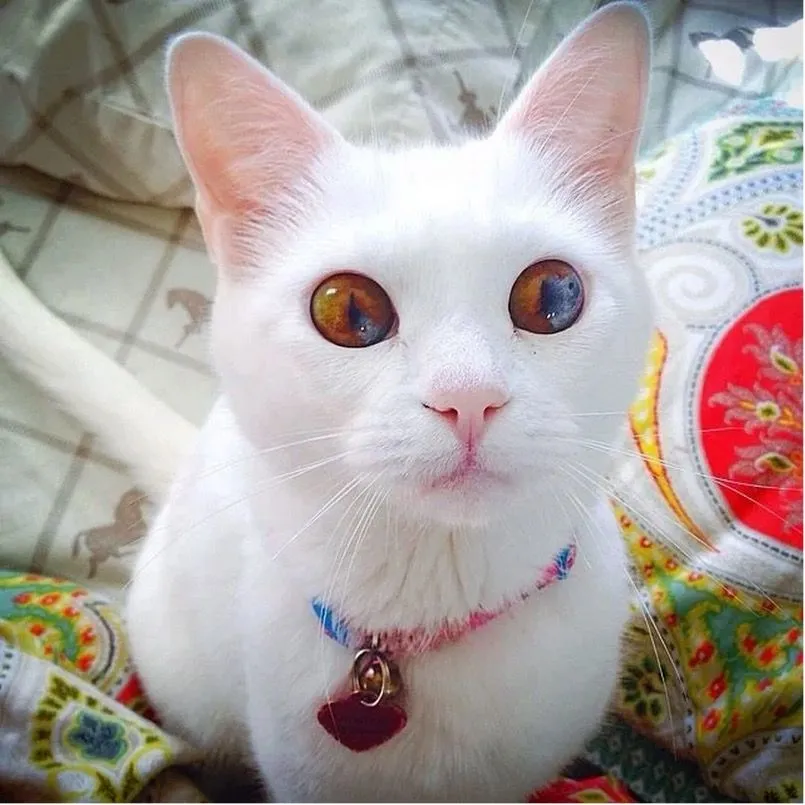 @myhightide/old.reddit.com
@myhightide/old.reddit.com
Heterochromia in cats occurs when there is a variation in the amount of melanin present in each eye, leading to the manifestation of different eye colors. While it may be considered a rarity, heterochromia is not uncommon in the feline world and can occur in a variety of breeds and coat colors.
The Piebald Mutation
The world of snakes offers a surprising array of colors and patterns, and the piebald python is a particularly stunning example. This isn't your average constrictor; the piebald mutation creates a truly unique appearance that's captured the attention of reptile enthusiasts.
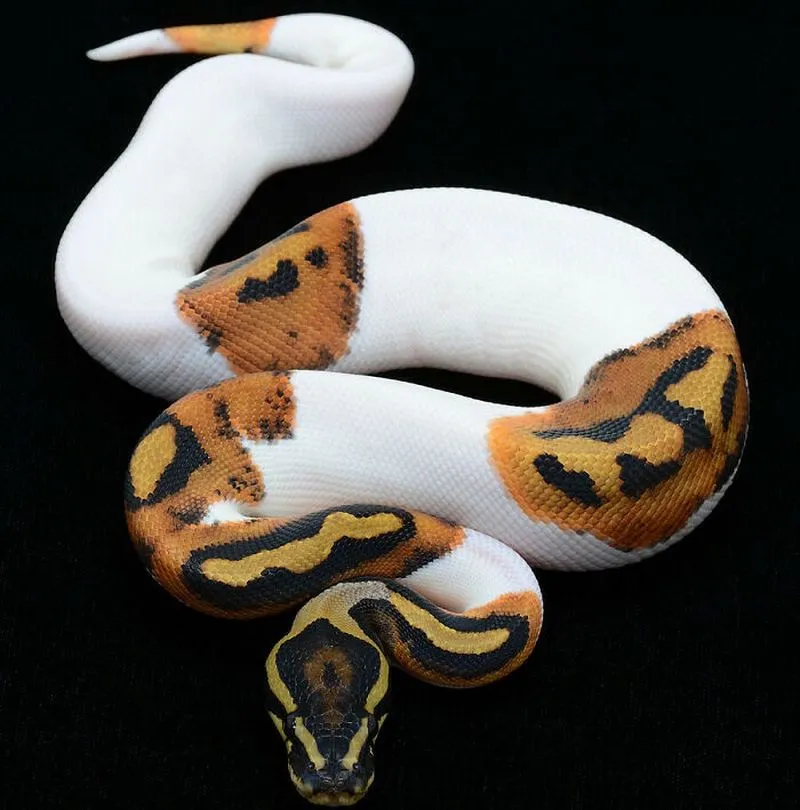 @DaniStormborn/old.reddit.com
@DaniStormborn/old.reddit.com
The piebald trait is a recessive genetic mutation most commonly seen in ball pythons, though it can occur in other species as well. It disrupts the normal pigment production, resulting in patches of white scattered across the snake's body. These patches can vary greatly in size and distribution, creating a one-of-a-kind look for each snake.
Unveiling the Dwarf Dalmatian Anomaly
The playful personality and distinctive spotted coat of the Dalmatian breed have captured hearts for centuries. But within this beloved breed exists an even rarer gem – the dwarf Dalmatian anomaly. This unique variation throws a fascinating curveball at genetics, creating a Dalmatian unlike any other.
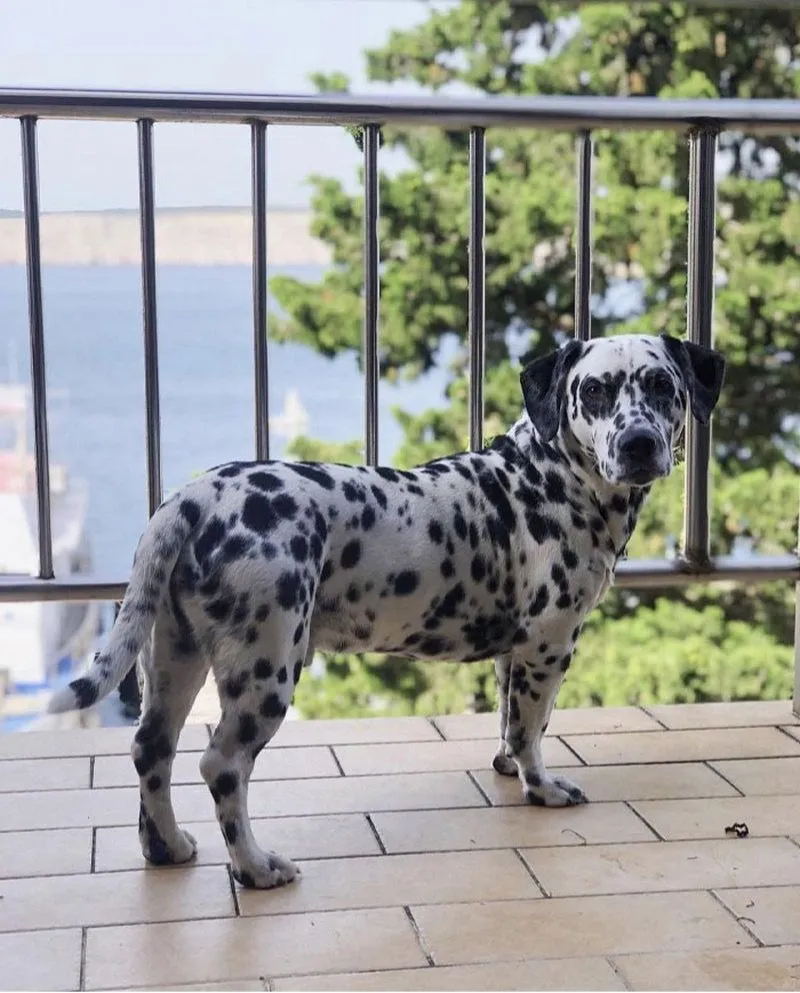 @dogememes_dinoruby/old.reddit.com
@dogememes_dinoruby/old.reddit.com
These dogs are generally smaller, but not dramatically so. The true anomaly lies in their leg development. Dwarf Dalmatians exhibit a form of achondroplasia, a condition that affects the growth of cartilage. This results in shorter legs compared to the rest of their body, giving them a somewhat stockier build.
The Charming Life of a One-Eared Cat
Microtia or anotia, the conditions in which a cat is born with either a small or absent ear, are rare anomalies that underscore the intricacies of genetic development. While the lack of an ear might seem like a disadvantage, cats with microtia often have normal hearing in the remaining ear.
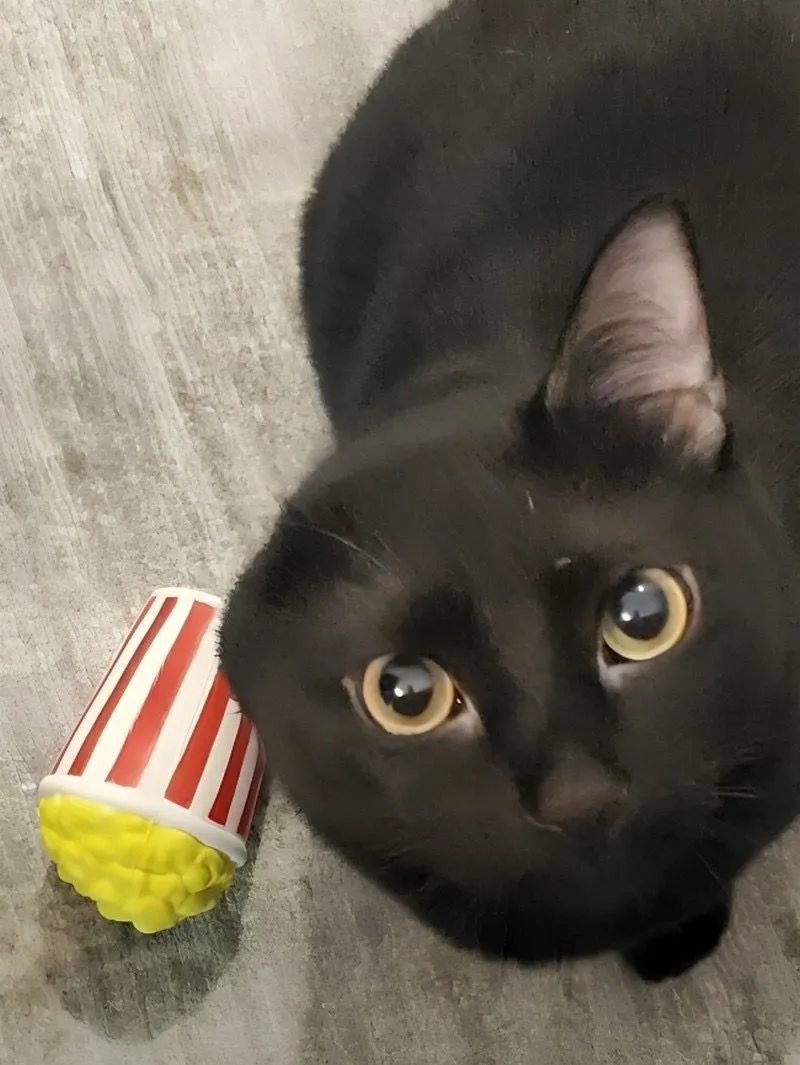 @NinjaFiasco/old.reddit.com
@NinjaFiasco/old.reddit.com
Their balance may be slightly affected, but they adapt remarkably well. Often, cats with unique appearances possess equally unique personalities. This one-eared wonder could surprise you with its playful energy, cuddly tendencies, or perhaps a touch of independent spirit.
The Curious Case of the Two-Nosed Cat
Have you ever heard of a cat with two noses? Believe it or not, this anomaly, while rare, can actually occur in the cat kingdom. It all boils down to a fascinating glitch in a crucial stage of development before birth when the facial structures fail to completely fuse.
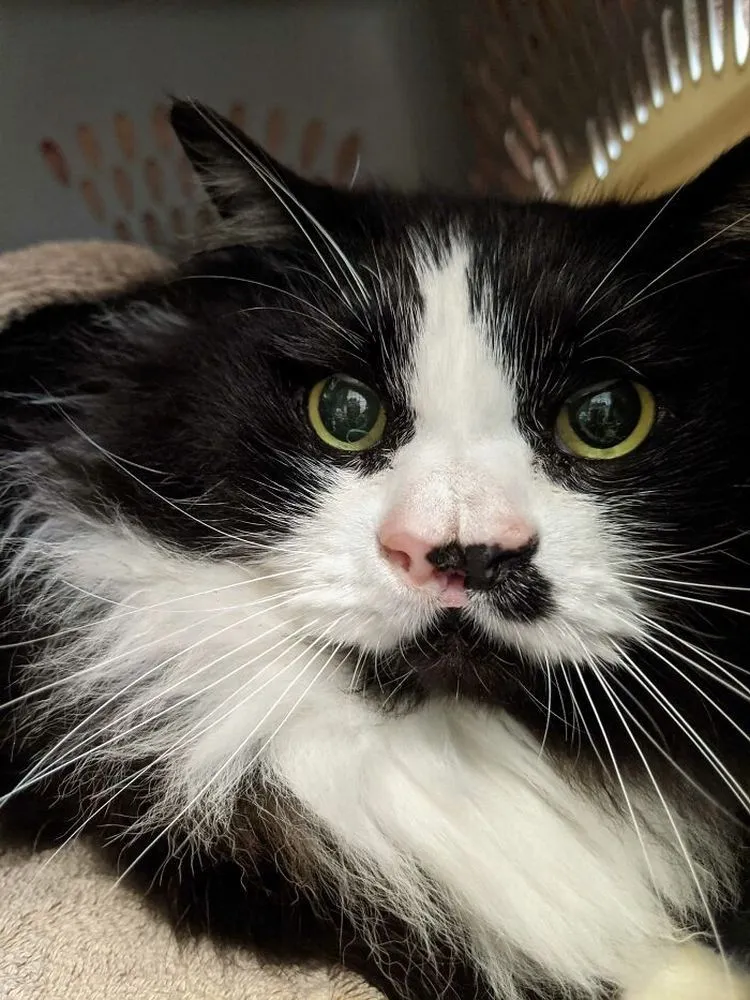 @theyenyen/old.reddit.com
@theyenyen/old.reddit.com
The result? Two distinct nasal passages, often appearing as a cleft or dip in the center of the normal nose. The good news is that, in most cases, both noses are fully functional. This means a two-nosed cat can enjoy all the wonderful smells the world has to offer – from enticing catnip to the questionable aroma of your shoes.
The Ghostly Doberman
The Doberman Pinscher, known for its sleek physique and regal aura, can sometimes surprise with an unexpected twist – albinism. While undeniably striking with their pale fur and light eyes, Dobermans with this genetic condition face a unique set of challenges.
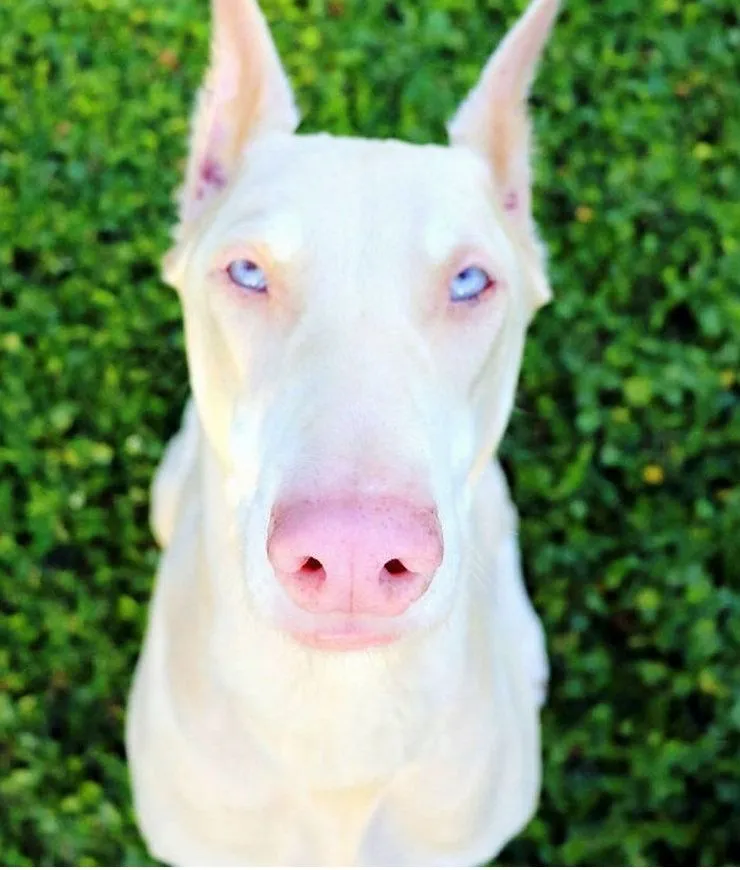 @amyeiler/old.reddit.com
@amyeiler/old.reddit.com
Albinism disrupts the production of melanin, the pigment responsible for skin and eye color. This ethereal beauty, however, comes with a hidden vulnerability. Doberman albinism makes them extremely sensitive to sunlight. Unlike their dark-coated counterparts, they lack the melanin shield that protects against harmful UV rays.
The Werewolf Cat
Imagine a cat with a coat that resembles a werewolf – a mesmerizing mix of bare patches and sleek fur. This isn't a creature of myth, but the Lykoi cat, a captivating breed born from a rare natural mutation. Unlike other hairless cat breeds achieved through selective breeding.
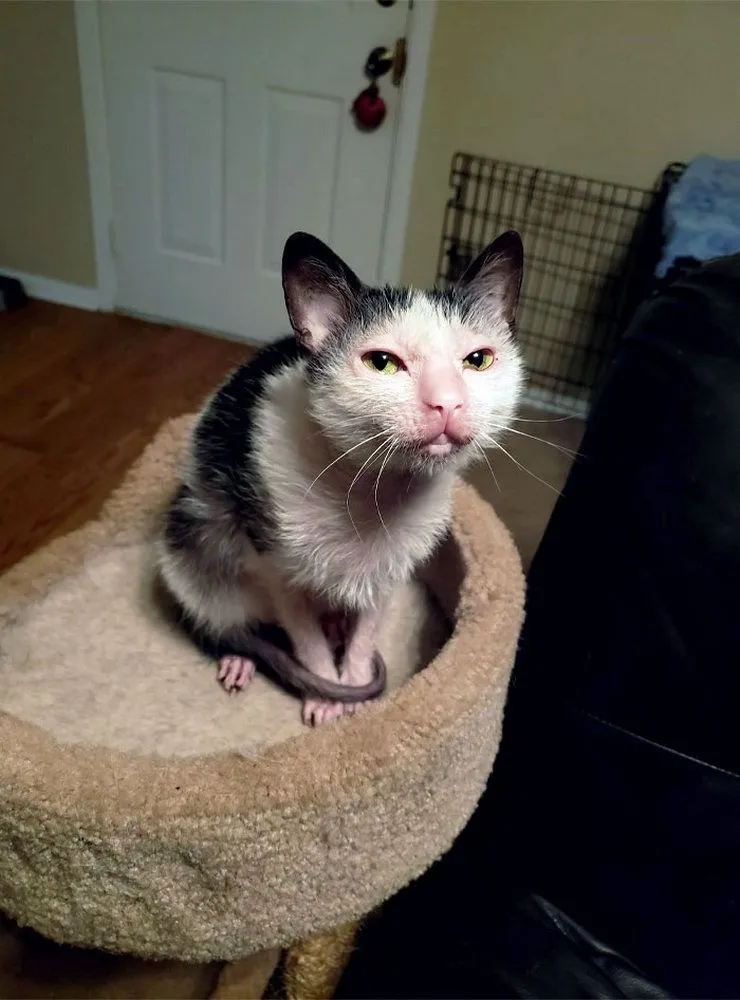 @EtherealEffigy/old.reddit.com
@EtherealEffigy/old.reddit.com
The Lykoi's unique appearance is a gift of nature. A spontaneous mutation in domestic shorthair cats disrupts their hair growth, resulting in a sparse, patchy coat. This striking feature, often accompanied by roan coloring (a mix of colored and white hairs), has earned them the nickname "werewolf cat."
A Two-Faced Kitten Takes the World by Storm
This special kitten, with two distinct faces sharing one body, is a living example of diprosopus, also known as craniofacial duplication. These two-faced cats are incredibly rare, occurring due to a complex glitch during embryonic development.
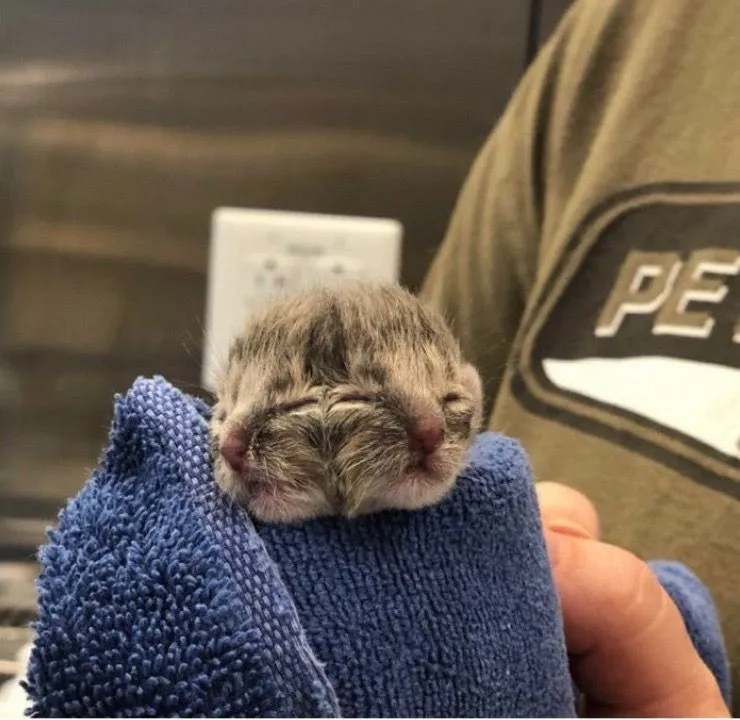 @kcpetproject/twitter.com
@kcpetproject/twitter.com
The kitten may have two faces but typically functions as a single unit. Both faces might have noses and mouths, but often only one set is fully functional for eating and breathing. The eyes may be independent, each taking a different view of the world, or they might move in coordination.
More Than Just Paws
Polydactylism, the technical term for extra toes, is a harmless genetic mutation. It's most prevalent in Maine Coons and Pixiebob breeds but can occur in any cat. The additional toes can vary in number and size, sometimes even sporting a tiny claw.
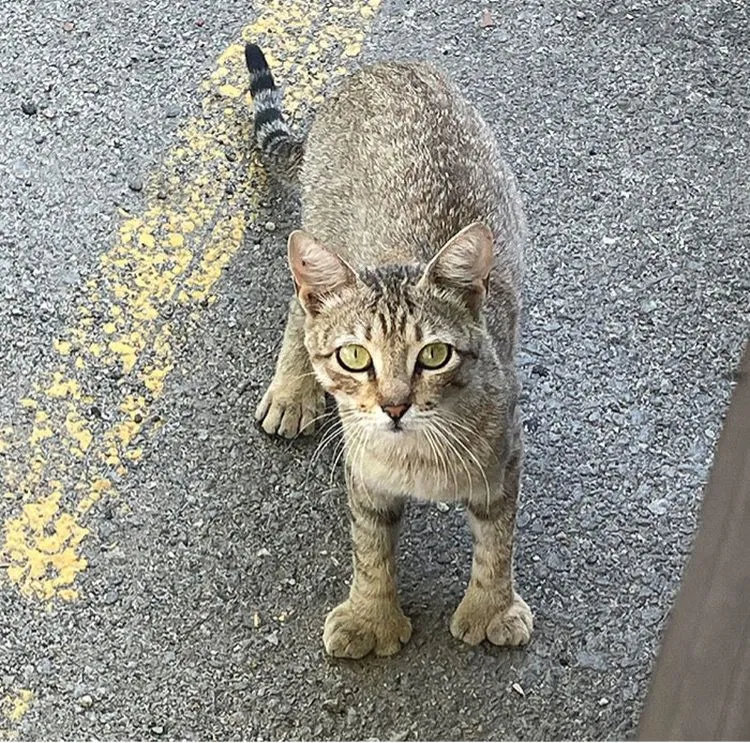 @neon_noire/old.reddit.com
@neon_noire/old.reddit.com
Legends from around the world associate extra toes with good luck, earning polydactyl cats nicknames like "Hemingway cats" (after the famous author who owned a polydactyl feline). While there's no scientific basis for this, there's no denying the extra toes can enhance a cat's grip and make them excellent climbers.
Little Sheep Bunnies
The Astrex rabbit is a product of a rare genetic mutation within the Rex breed. Known for their plush, velvety fur, Rex rabbits lack the usual guard hairs, resulting in an incredibly soft coat. But the Astrex takes it a step further. This mutation adds a delightful twist – the fur develops a wave or curl, giving it an irresistibly fluffy appearance.
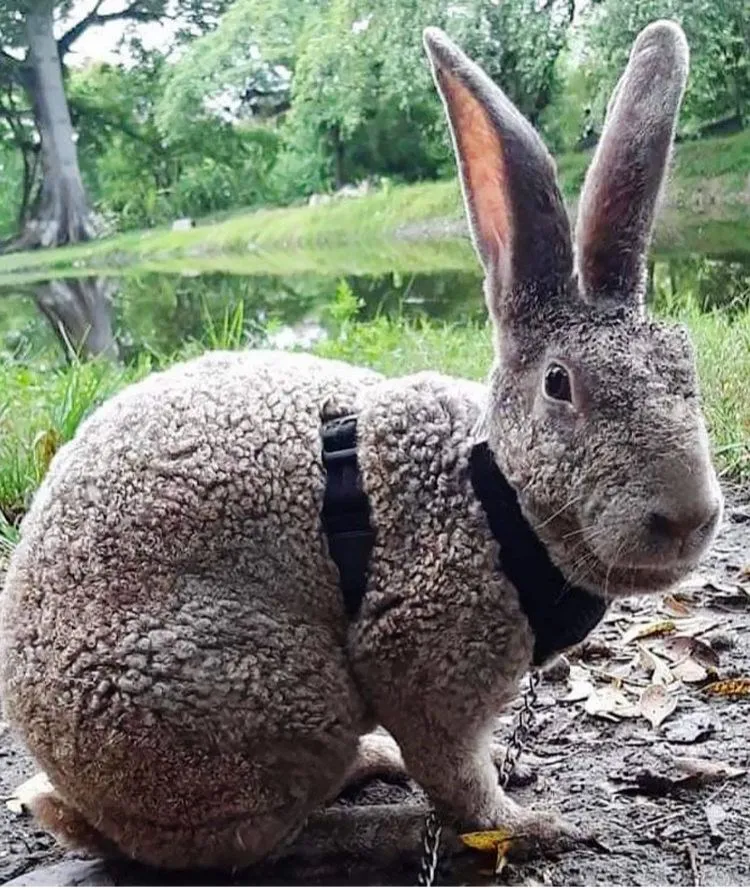 @The_Last_Minority/old.reddit.com
@The_Last_Minority/old.reddit.com
Unlike some curly-haired breeds born with their signature look, Astrex rabbits start with straight fur. The magic unfolds around 4-6 weeks of age when their fur begins to develop its characteristic curl. The final texture and curliness can vary from rabbit to rabbit, making each Astrex a unique bundle of fluff.
Ears Like Seashells
Unlike some breeds with folded ears achieved through selective breeding, the American Curl's ears are a gift of nature. A spontaneous mutation in the early 1980s resulted in kittens born with ears that began to curl backward within a few days.
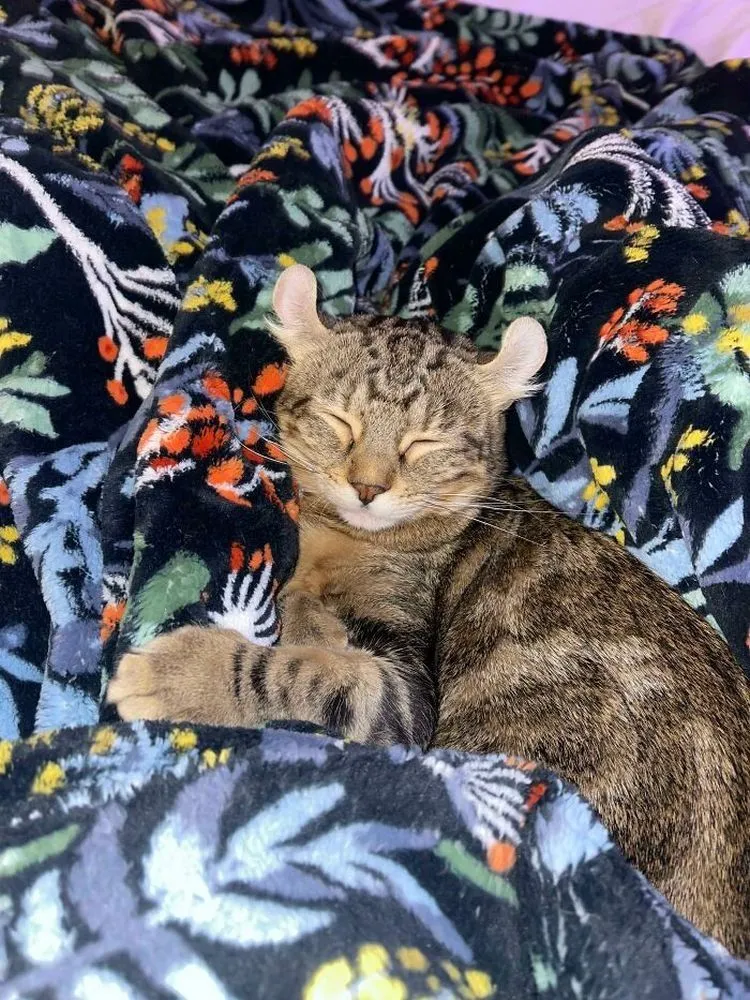 @spicyyaria/old.reddit.com
@spicyyaria/old.reddit.com
This captivating feature initially met with surprise and eventually led to the development of a new breed. The magic unfolds around three to four days old when the American Curl kittens' ears begin to curl. The degree of curl can vary, with some ears forming a graceful full curl and others a softer, crescent-shaped bend.
A Cat with Extra Toes Charms the World
In a truly mind-boggling genetic twist, an adorable cat has become an internet sensation thanks to her bizarre congenital condition - she was born with extra feet on both her front and back legs! That's right, this peculiar puss doesn't just have the standard four paws, but a whopping eight appendages that make her look like some sort of feline octopus.
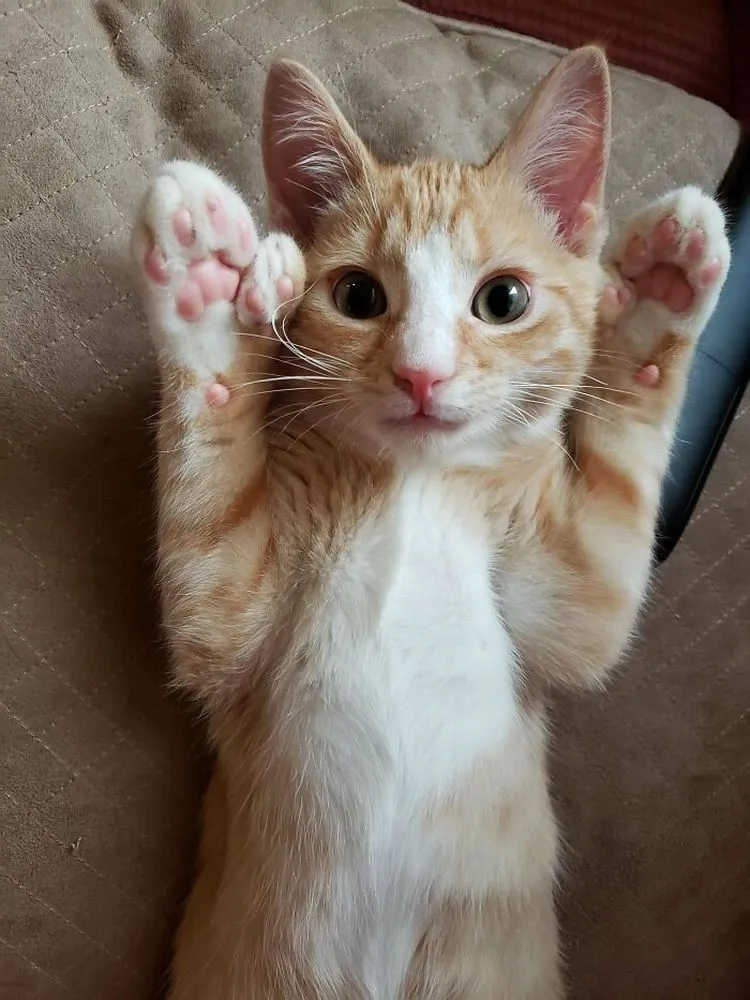 @junkyardmolly/old.reddit.com
@junkyardmolly/old.reddit.com
The unique anatomical quirk of this cat is due to a random genetic mutation called polymelia, which caused her to develop duplicated legs on each side during embryonic development. While polydactyl cats (with extra toes) are fairly common, this cat's extreme version with entirely separate full limbs is exceedingly rare.
Double the Toes, Double the Fun
This cat is not your average feline—it boasts a unique trait that sets it apart from its peers: extra toes. Known as polydactyly, this genetic anomaly results in the cat having more than the usual number of toes on its paws. Beyond its visual appeal, polydactylism in cats is a fascinating example of genetic variation in action.
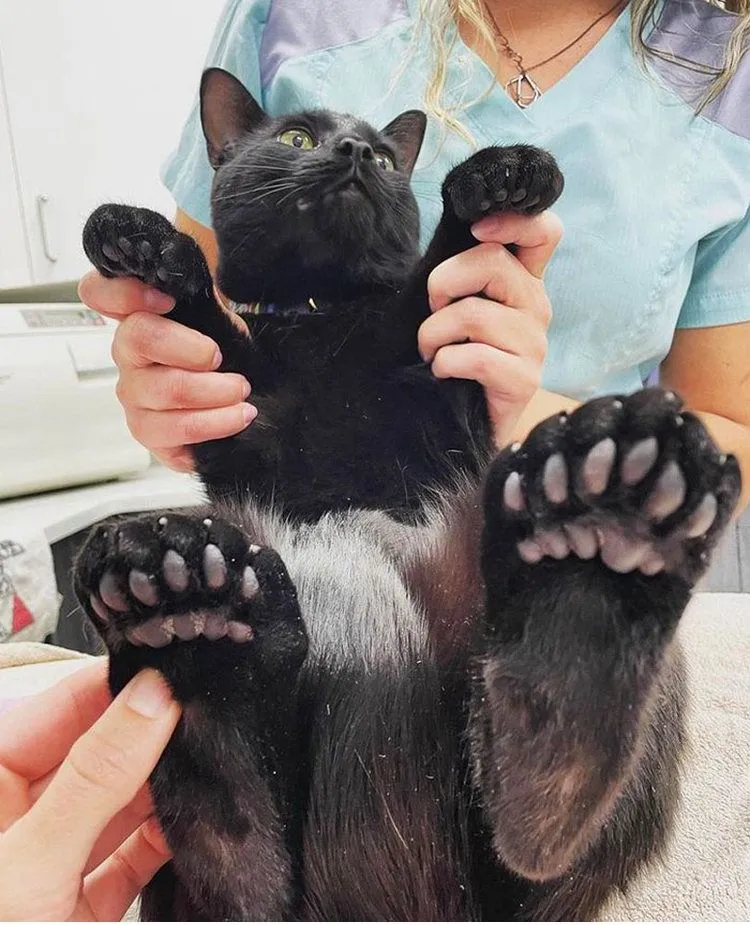 @highrollerbipolar/old.reddit.com
@highrollerbipolar/old.reddit.com
This condition can be found in various breeds and mixed-breed cats. While the exact genetic mechanisms underlying polydactyly are not fully understood, it is believed to be inherited through a dominant gene. This cat serves as a reminder of the endless wonders of nature and the delightful surprises that can be found in the animal kingdom.
Round Ears and the Heart-Shaped Marking
This cat is a unique sight to behold, with its rounded ears and a distinct heart-shaped marking on its side. The cat's rounded ears give it an endearing appearance, reminiscent of a cuddly teddy bear. Combined with the heart-shaped marking on its side, this cat exudes an irresistible charm that instantly draws attention and affection.
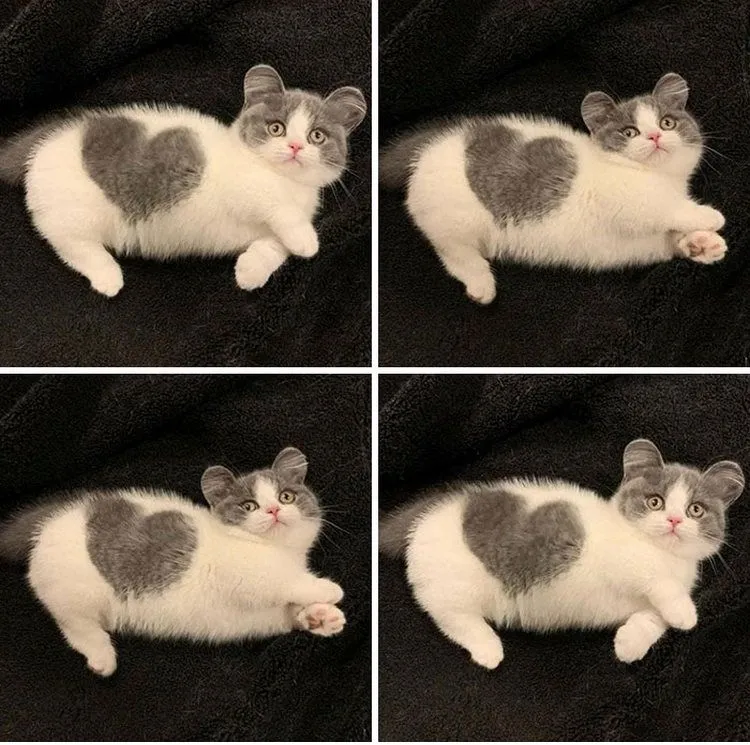 @tvich1015/old.reddit.com
@tvich1015/old.reddit.com
From a genetic perspective, the cat's rounded ears and heart-shaped marking are the result of a fascinating combination of inherited traits and chance. While rounded ears may be a characteristic of certain cat breeds or a result of natural genetic variation, the heart-shaped marking is a delightful anomaly that adds an extra touch of whimsy to this already enchanting feline.
Dalmatian-Inspired Serpent
This extraordinary serpent boasts a striking pattern reminiscent of the iconic spotted coat of the Dalmatian dog breed. With its white base color adorned by irregular black spots and patches, this snake captivates onlookers with its uncanny resemblance to its canine counterpart.
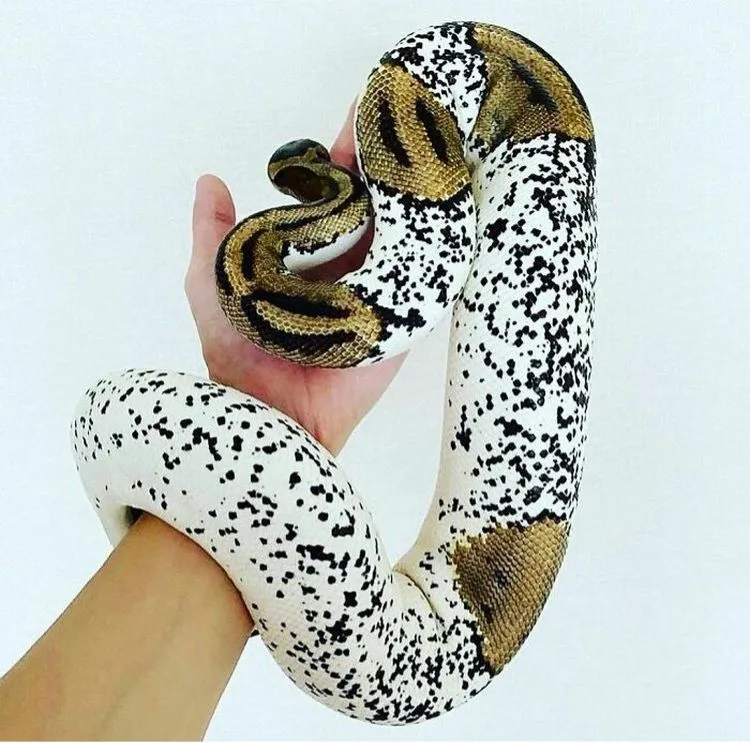 @thepythonpit/instagram.com
@thepythonpit/instagram.com
From a genetic standpoint, the appearance of this snake mirrors the fascinating interplay of inherited traits and environmental influences. While the exact mechanisms behind its distinctive pattern remain a subject of scientific inquiry, the result is a stunning example of nature's artistry.
A Mouth Full of Mystery
Supernumerary teeth, simply put, are extra teeth that grow outside the normal number. In cats, this is a relatively rare occurrence, and having three canine teeth in the front is even less common. This anomaly can happen due to various factors, including genetics, developmental issues, or even retained baby teeth.
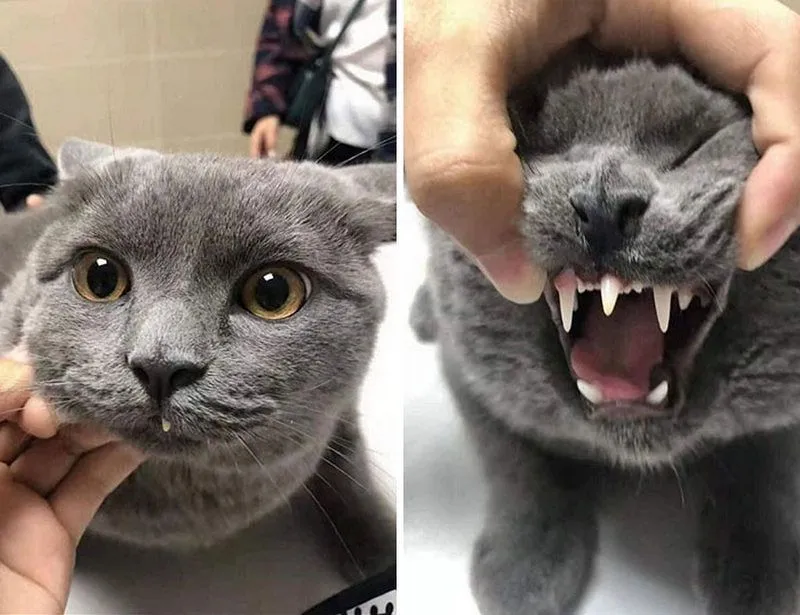 @catszdiary/facebook.com
@catszdiary/facebook.com
However, the extra tooth doesn't necessarily have to be a negative. If it doesn't cause any dental issues, it might just be a quirky feature that adds to the cat's unique charm. Imagine the adorable surprise when someone opens the cat's mouth for a yawn and discovers a trio of tiny canines!
A Limb Difference
Dogs born with limb differences are unique in their own special way. These differences can manifest in various forms, such as missing a limb, having an underdeveloped limb, or having an extra limb. An example is the dog in the photo with different limbs.
 @nessie_mcnubs/instagram.com
@nessie_mcnubs/instagram.com
He was born without his front legs. His journey is a testament to resilience, adaptation, and the boundless compassion of humans. Puppies with such severe limb differences often face numerous challenges, including difficulties with mobility, feeding, and general care. But they still remain cute and active.
A Rare Cat’s Condition That Causes Muscles to Grow Excessively Large
Myostatin-related muscle hypertrophy is a rare genetic condition that affects both humans and animals, including cats. This condition is characterized by a deficiency in myostatin, a protein that normally inhibits muscle growth. When myostatin levels are low or absent, muscles grow excessively large.
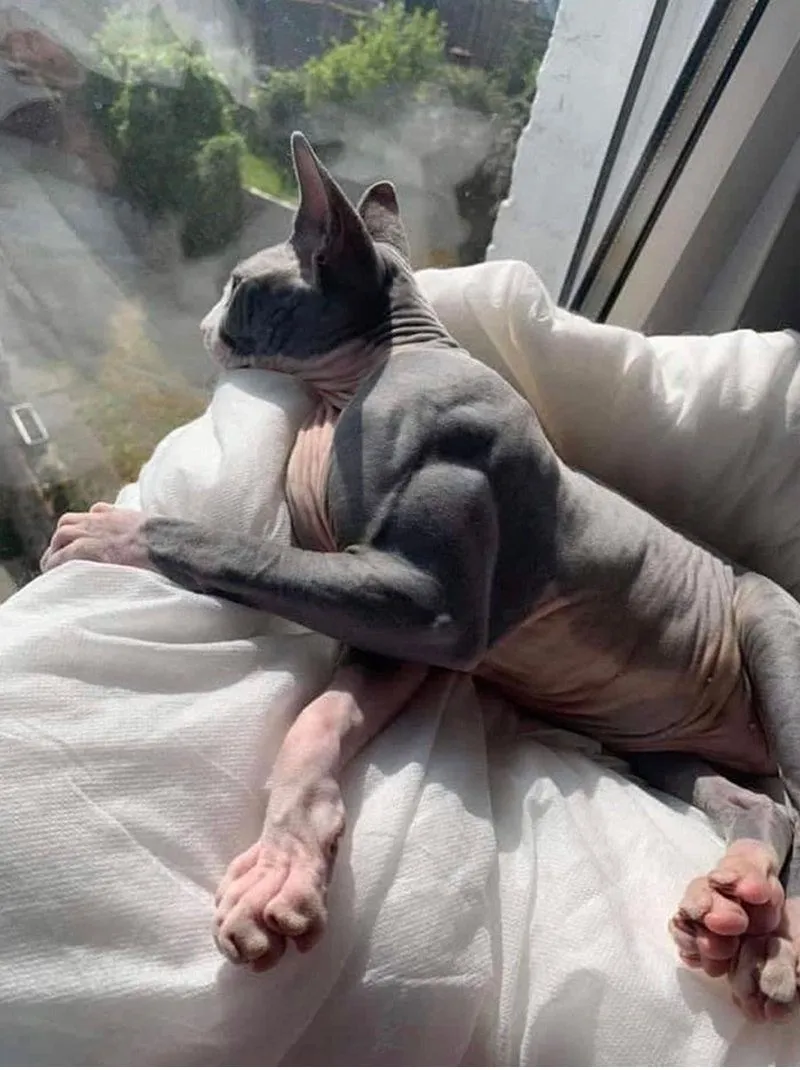 @bsmith2123/old.reddit.com
@bsmith2123/old.reddit.com
This cat became an internet sensation due to his extraordinarily muscular physique. However, it's important to note that while this condition might look impressive, it can sometimes affect mobility and joint health. Responsible owners with cats suspected of having this condition should consult a veterinarian to ensure their feline friend's well-being and overall health.
A Rare Black Patch on Its Face
In Golden Retrievers, the striking golden color is due to the interplay of genes. The presence of a black patch suggests a mutation affecting the pigment cells (melanocytes). Normally, these cells produce the characteristic golden hue, but a mutation can cause some cells to produce black pigment instead, leading to a patch of black fur.
 @mister.enzoviola/instagram.com
@mister.enzoviola/instagram.com
Somatic mutation refers to a genetic alteration acquired by a cell that can then be passed to the progeny of the mutated cell through cell division. If such a mutation occurs in a melanocyte early in the dog's development, it can result in a region of the skin producing black fur, while the rest of the coat remains golden.
The Dog Appears as Though its Ears are Floating in the Air
Dogs come in all shapes and sizes, with an incredible variety of physical traits that can sometimes result in rare and fascinating anomalies. One such anomaly is a dog whose ears appear to be hanging in the air, a result of a rare mutation. This unique feature can make the dog look as if it has floating ears, adding to its distinctive and whimsical appearance.
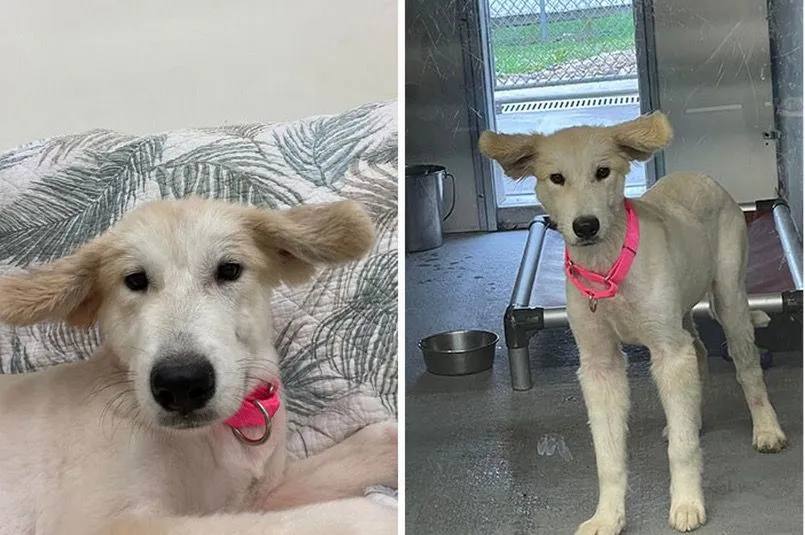 @flytingnotfightingReport/old.reddit.com
@flytingnotfightingReport/old.reddit.com
The mutation affecting the dog's ears is likely a result of changes in the cartilage structure or the connective tissues that support the ears. Normally, a dog's ears are supported by a combination of cartilage, skin, and muscle, which allows them to stand upright, droop, or move in response to sounds and emotions.
Like A Little Tiger…
In the case of a cat with vitiligo, the depigmentation often creates striking and irregular patterns of white fur against its natural coat color. When these patterns are particularly extensive and well-distributed, they can give the cat an appearance reminiscent of a white tiger, with bold contrasts and unique markings that stand out dramatically.
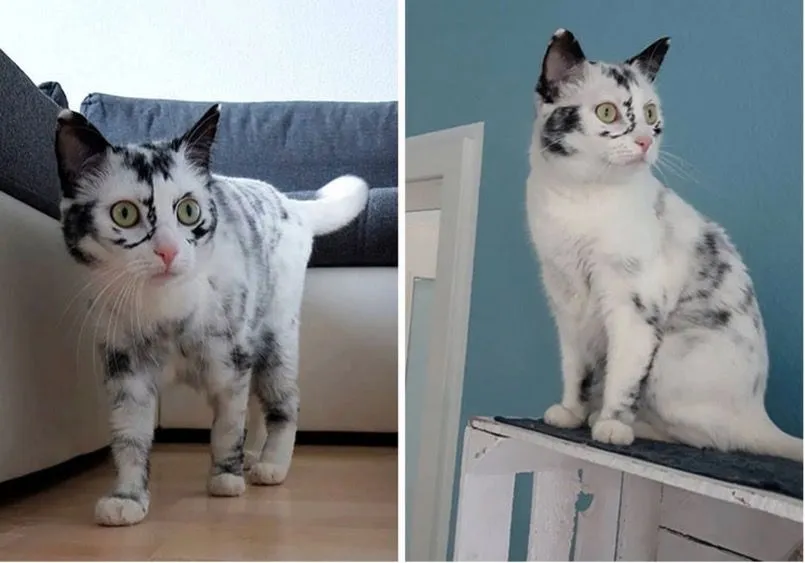 @elli.vitiligo/instagram.com
@elli.vitiligo/instagram.com
The exact cause of vitiligo in cats is not entirely understood, but it is believed to be related to genetic factors and possibly autoimmune processes. Some research suggests that stress and environmental factors might also play a role in triggering the condition.
The Kitten’s Eyes Like Stained Glass
Kittens with different colored eyes are truly enchanting and stand out with a mesmerizing and unforgettable appearance. This condition, called heterochromia, results from variations in the distribution and concentration of melanin, the pigment responsible for eye color.
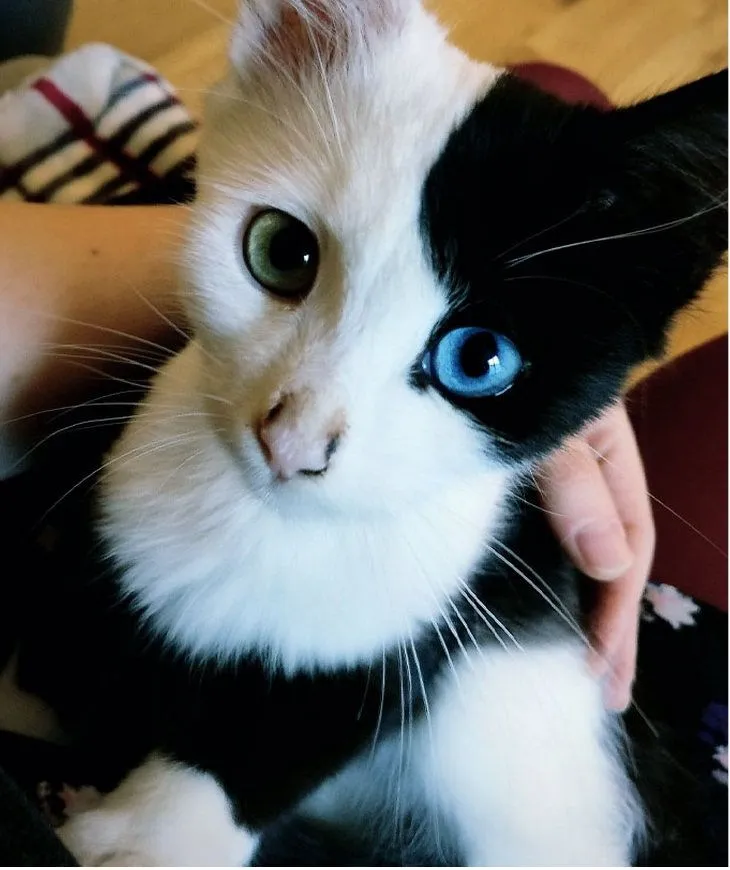 @MayaKitsu/old.reddit.com
@MayaKitsu/old.reddit.com
There are two main types: complete heterochromia, where each eye is a distinctly different color, such as one blue eye and one green eye, and sectoral heterochromia, where a single eye contains multiple colors, such as a predominantly blue eye with a section of green or brown.
Unique Markings
The striking half-and-half coloration of a rabbit can be attributed to a phenomenon known as chimerism. Chimerism occurs when an individual has two sets of DNA, originating from different zygotes that fused early in development. This means the rabbit essentially has two different genetic makeups within its body, leading to distinct and separate coat colors.
 @rkprado/twitter.com
@rkprado/twitter.com
Another potential cause could be mosaicism, a condition where genetic mutations occur in some cells after fertilization. This results in different patches of cells expressing different traits, such as coat color. While mosaicism usually results in more patchy appearances, an even split down the middle, although rare, can happen.
The Enigma of the Long Tail
When a cat possesses an abnormally long tail, it only deepens the sense of intrigue surrounding them. While most cats have tails that are proportionate to their body size, this cat defies expectations with tails that seem to stretch on for an eternity. The exaggerated length of his tail adds to their mystique, prompting questions about the cat's origins and genetic makeup.
 @jubileesoph/old.reddit.com
@jubileesoph/old.reddit.com
His lengthened tail could be due to various factors. It might be a result of a genetic mutation that affects tail growth or development, leading to an unusually elongated appendage. Alternatively, it could be the product of selective breeding, intentional or unintentional, that has resulted in this distinctive trait.
The Extraordinary Four-Eared Cat
From the moment he entered the world, this cat defied expectations with his four ears—a genetic anomaly that occurs in only a handful of felines worldwide. While most cats have two ears, his additional set gave him an unmistakably distinctive appearance, attracting attention wherever he went.
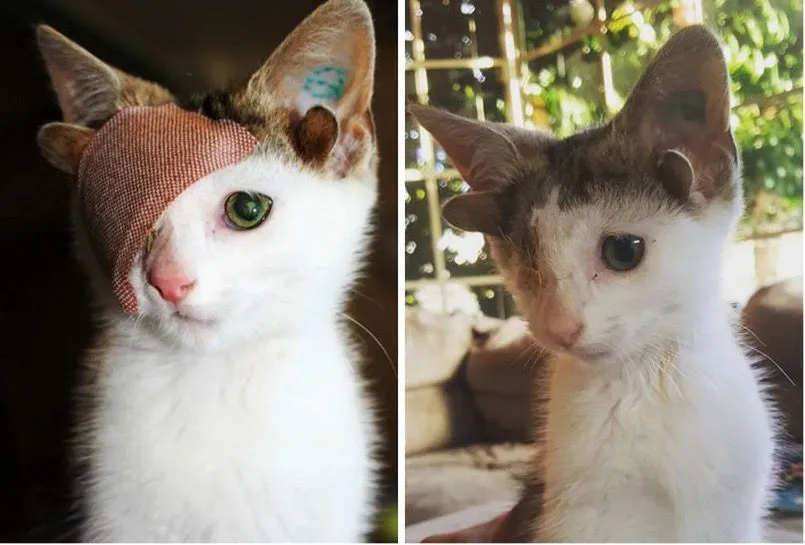 @frank_n_kitten/instagram.com
@frank_n_kitten/instagram.com
Despite his extraordinary trait, life had more challenges in store for this resilient feline. Through an unfortunate turn of events, he lost one of his eyes, adding another layer to his already complex story. Amidst life's trials and tribulations, fate smiled upon him when he found a family willing to embrace him wholeheartedly.
The Evolution of Cat's Fur
Born with a sleek and solid black coat, this cat initially appeared like any other feline. But tiny white spots began to appear sporadically across her fur, a sign of the underlying vitiligo slowly manifesting itself. With each passing year, these spots multiplied, gradually transforming her appearance and adding an ethereal quality to her once-dark coat.
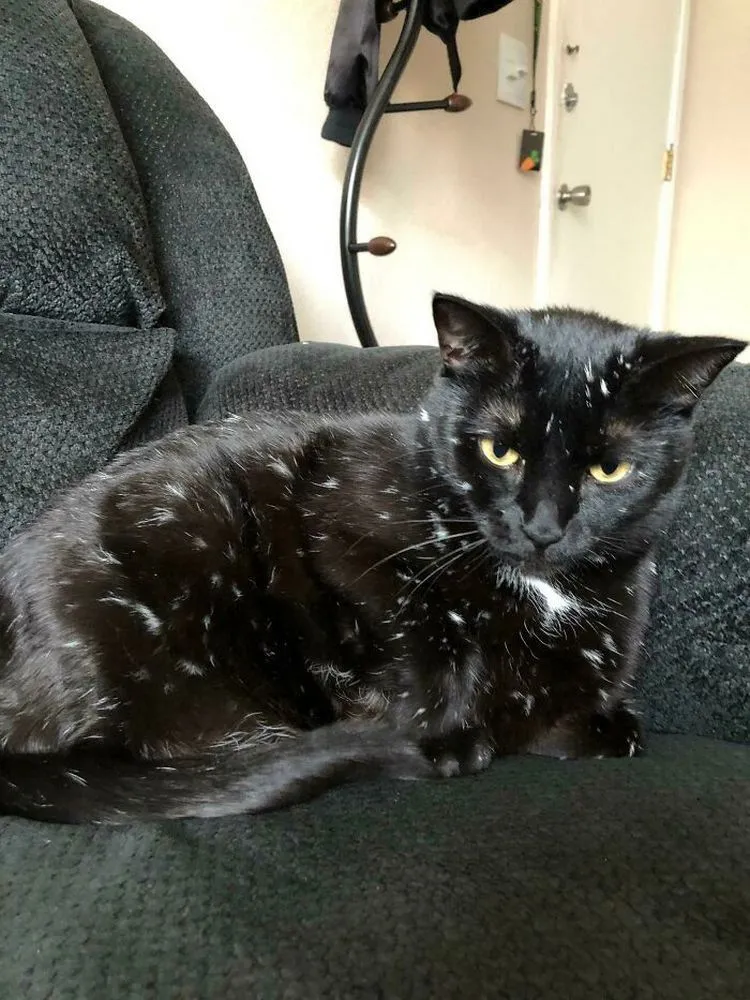 @Polywordsoup/old.reddit.com
@Polywordsoup/old.reddit.com
In cats, vitiligo manifests as the gradual depigmentation of the fur, resulting in the emergence of white patches or spots amidst areas of darker pigment. While the exact cause of vitiligo remains elusive, it is believed to be related to autoimmune factors or genetic predisposition.
The Spiderweb Pattern in Cat Eyes
The spider web pattern adorning this cat's eyes is a captivating anomaly, a biological wonder that transforms its gaze into a mesmerizing spectacle. Imagine a kaleidoscope within the iris, where fine lines, like the delicate spokes of a wheel, radiate outward from the pupil.
 @ViVilma/old.reddit.com
@ViVilma/old.reddit.com
This intricate design, known as sectoral heterochromia, isn't a uniform web in every cat. It's a tapestry woven by genetics, and the intensity and complexity can vary greatly. Some felines might display a subtle hint of the pattern. And other cats become captivating spectacles. The spider web design might be boldly etched in a contrasting color.
The Cat Seems to Harbor a Clandestine Persona
Snow-white fur makes this feline a beauty, but the captivating eye markings truly steal the show. Unique as a fingerprint, they elevate this cat to something extraordinary. Like a masked hero from a storybook, the cat's eyes are framed by bold, black circles, creating a distinctive and alluring look that captures the imagination.
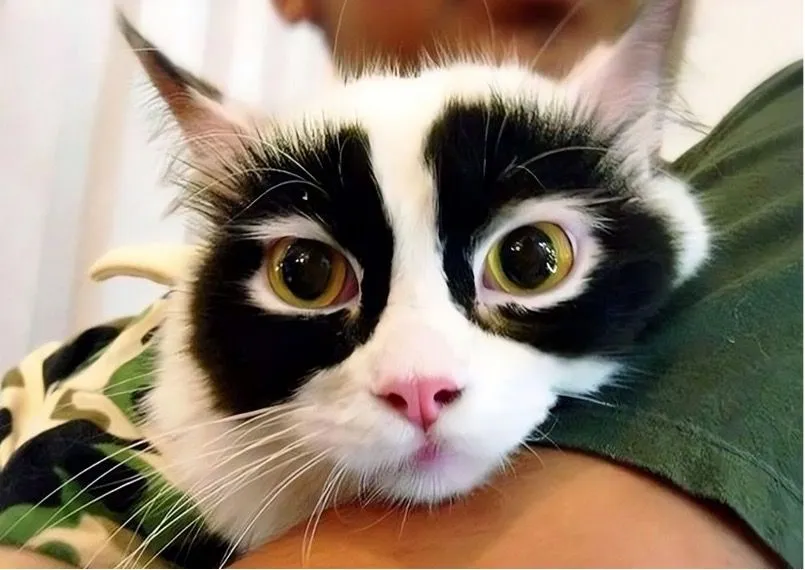 @chrisbarnett64/old.reddit.com
@chrisbarnett64/old.reddit.com
Nature can be a playful artist, especially when it comes to feline faces. This cat's captivating mask is a testament to that. The emergence of this unique pattern is a delightful surprise, a quirk of genetics that throws a twist into the expected coat of a cat.
This Charm Paw Print
The paw print on the puppy's nose is a delightful quirk of nature. While most puppies have plain noses, this one boasts a tiny imprint resembling a miniature paw, as if a playful pup decided to leave its mark right on its sibling's face.
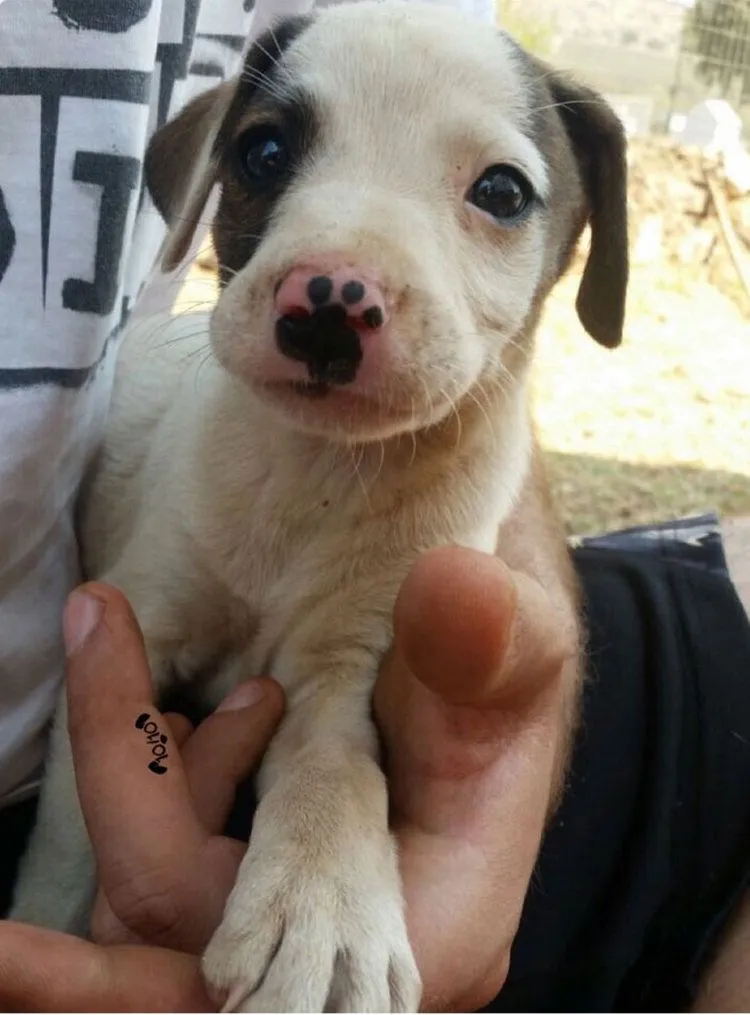 @dog_rate/twitter.com
@dog_rate/twitter.com
For the lucky individual who becomes this puppy's owner, the paw print on its nose creates a special connection. It's a distinctive feature that sets the puppy apart as one-of-a-kind, strengthening the bond between human and canine companion. Every time the owner looks at the puppy's nose, they're reminded of the joy and love this furry friend brings into their life.
Rainbow Reticulated Python
The rainbow reticulated python is a sight to behold, its sleek body adorned with scales that seem to dance with every hue of the rainbow. From vibrant reds and oranges to rich greens and blues, its iridescent coat creates a mesmerizing display of color that captivates the eye and sparks the imagination.
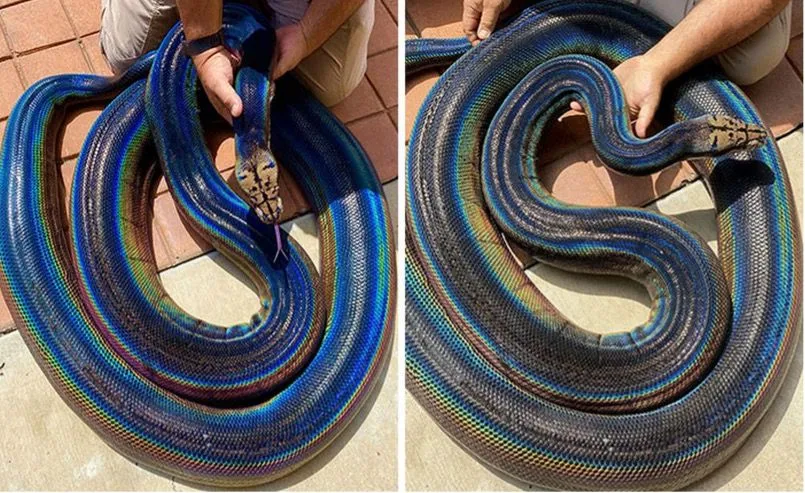 @thereptilezoo/instagram.com
@thereptilezoo/instagram.com
Its stunning appearance is not merely a stroke of luck but a testament to millions of years of evolution. Its vibrant colors serve a dual purpose—providing camouflage in its natural habitat while also serving as a visual spectacle that dazzles and delights all who behold it.
Striking Two-Colored Eyes of Cat Due to A Rare Genetic Condition
Meet this wonderful cat with amazing colorful eyes. One of its eyes is divided in half into two different colors - blue and green. The color harmony in its eyes impresses with its beauty and mystery. On one side - the blue speckle resembles the depth of the night sky and on the other - the green shade, like fresh grass in the meadow. However, this is a condition called Heterochromia.
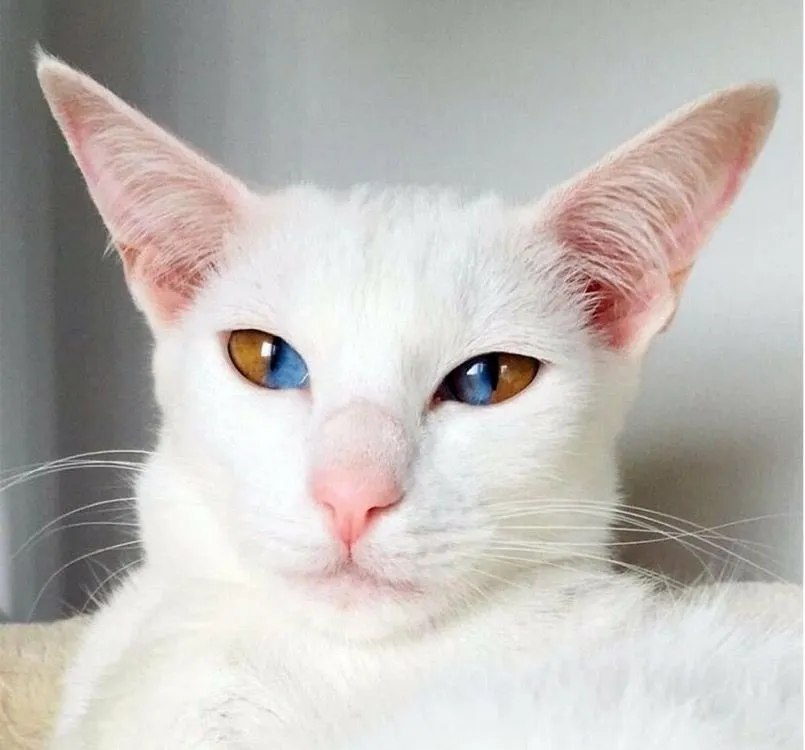 @oddity_olive/instagram.com
@oddity_olive/instagram.com
In this special cat, melanin production seems to have followed its own artistic whim, resulting in a breathtaking display of blue and yellow. This condition isn't just visually striking; it can also spark scientific curiosity. Veterinarians can determine the specific type of heterochromia, offering insights into the underlying genetic mechanisms at play.
Dwarfism in Dogs is not a Hindrance
The German Shepherd with dwarfism may exhibit proportions that differ from those of a standard German Shepherd. Their legs may be shorter, their body more compact, but their unmistakable features—alert ears, intelligent eyes, and a confident demeanor—remain intact, making them instantly recognizable as members of their esteemed breed.
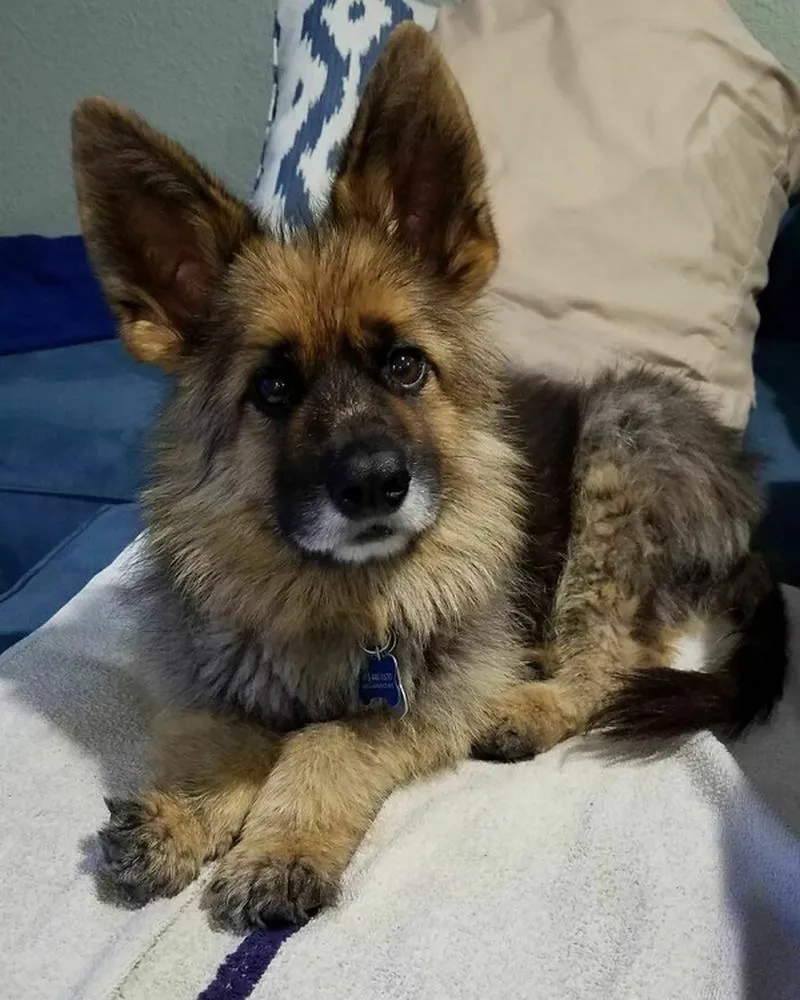 @zeus_the_dwarf_gsdReport/instagram.com
@zeus_the_dwarf_gsdReport/instagram.com
Living with dwarfism may present certain challenges for these dogs, such as mobility issues or health concerns associated with the condition. However, with proper care, attention, and love from their human companions, they can lead happy and fulfilling lives, proving that size is no barrier to living life to the fullest.
A Cat that Can Boast Unique Symmetry
The kitten's face presents a stunning example of symmetry. The gray side exudes a soft, muted elegance, while the black side adds a touch of mystery and intrigue. Together, they create a captivating contrast that draws the eye and sparks curiosity.
 @amazingnarnia/instagram.com
@amazingnarnia/instagram.com
Adding to the kitten's allure are its mesmerizing gray eyes, which seem to shimmer with an otherworldly glow. Set against the backdrop of its dual-toned face, the gray eyes stand out as a striking focal point, further enhancing the kitten's extraordinary appearance.
A Little Cat with a Big Heart
We have already heard about dogs with dwarfism. However, this anomaly also occurs among cats. This ginger kitten with dwarfism is a real tiny tot among his peers. At two months old, he is smaller than a rat and looks like a miniature version of a typical kitten.
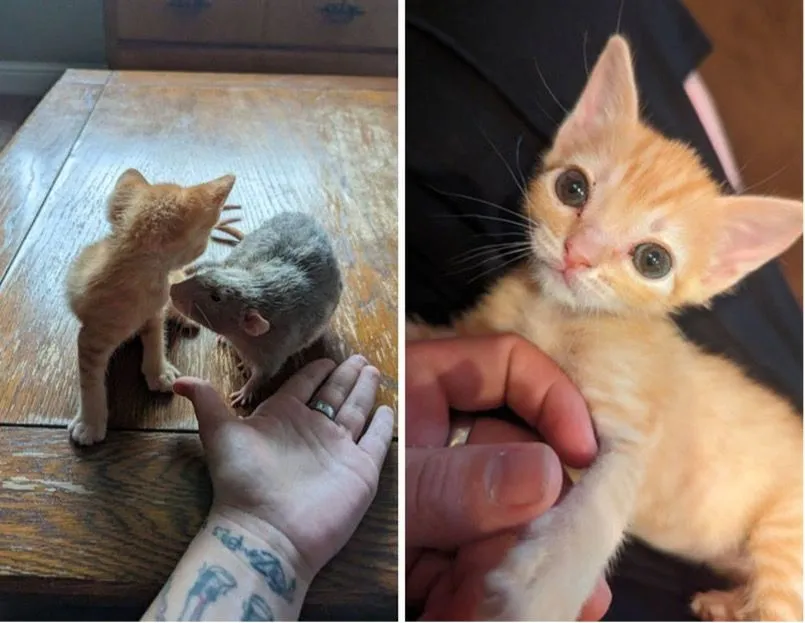 @witchscrawl/reddit.com
@witchscrawl/reddit.com
Dwarfism in cats also can cause health or mobility issues. However, this ginger kitten is full of energy and a desire to explore the world around him. Thanks to the love and care of his owners, he has every chance for a happy and fulfilling life.
Here is an Albino Raccoon
Albinism in raccoons, as in other animals, is caused by a genetic mutation that inhibits the production of melanin. This lack of melanin results in the raccoon's distinctive white fur and light-colored eyes. Because this condition is genetic, it is extremely rare, making sightings of albino raccoons quite uncommon and special.
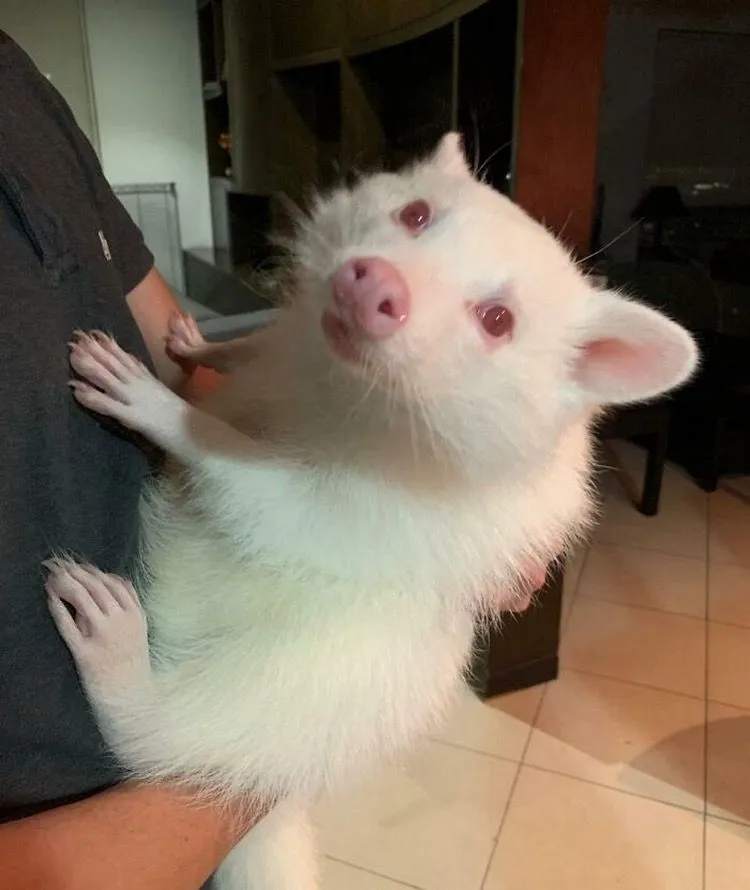 @Orion117/imgur.com
@Orion117/imgur.com
The albino raccoon's ethereal appearance comes with certain challenges. Their lack of natural camouflage makes them more visible to predators, and their sensitive eyes can be more susceptible to sunlight, often leading to vision problems.
Oh, Those Crazy Whiskers!
Whiskers are specialized sensory hairs that are deeply embedded in a cat's skin and connected to the nervous system. They are typically much thicker and more rigid than ordinary fur. In this particular cat, the whiskers are notably longer and more prominent than usual, creating a striking and almost whimsical appearance.
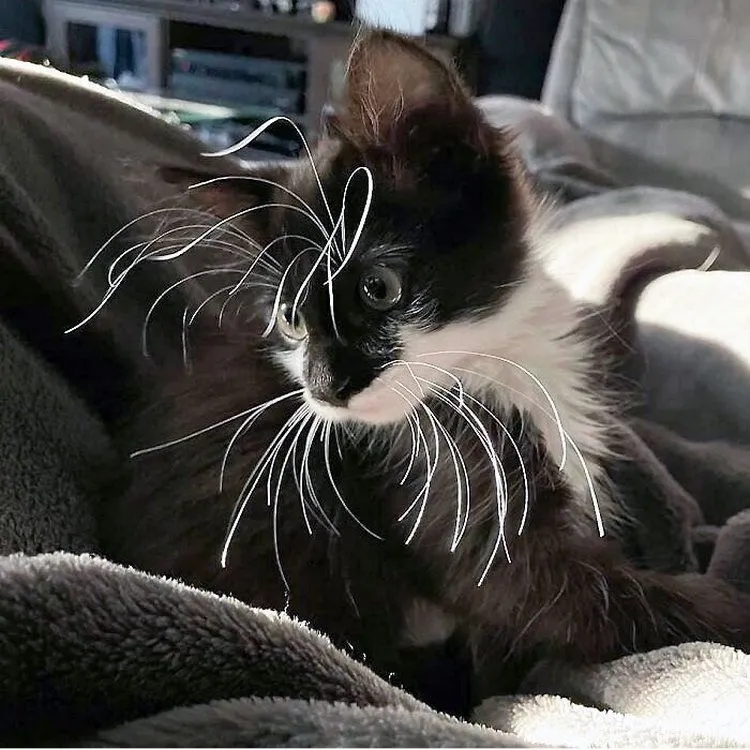 @Felspawn/reddit.com
@Felspawn/reddit.com
While they look stunning, these impressive whiskers serve crucial purposes. They help the cat navigate its environment, detect changes in the air, and assess the width of spaces to avoid getting stuck. The extraordinary length of this cat’s whiskers likely enhances its ability to sense and interpret the world around it, making it exceptionally adept at maneuvering through its surroundings.